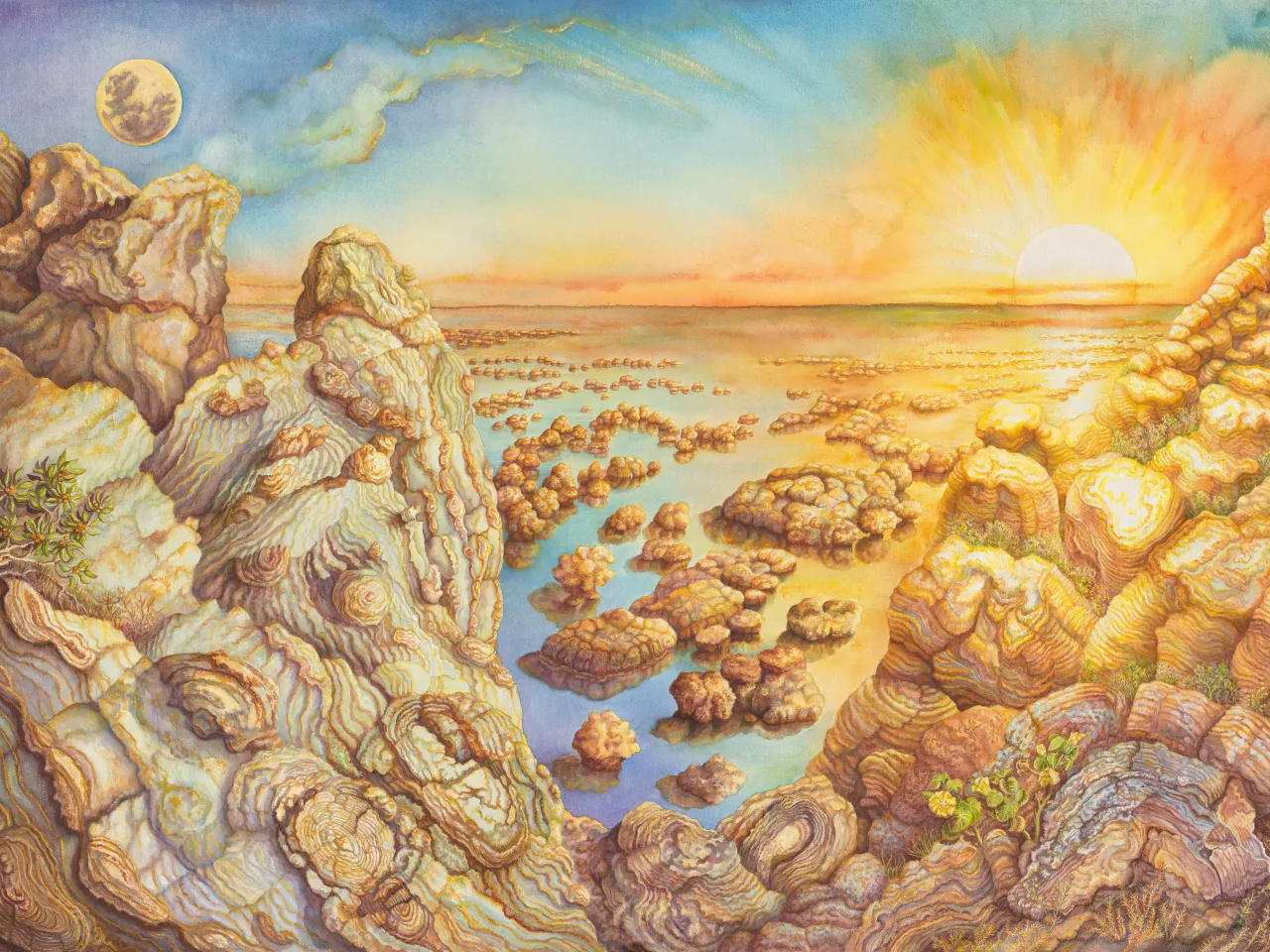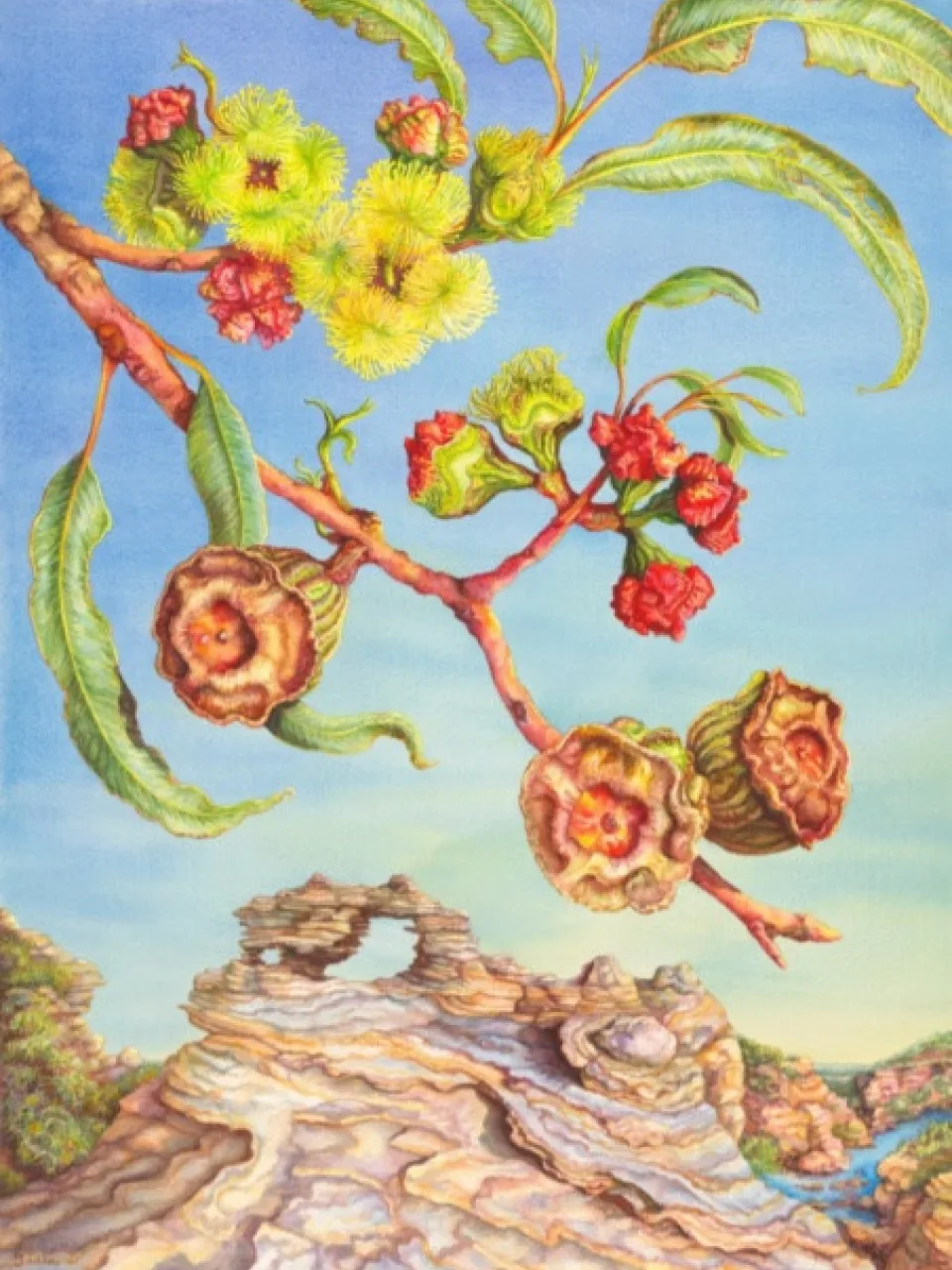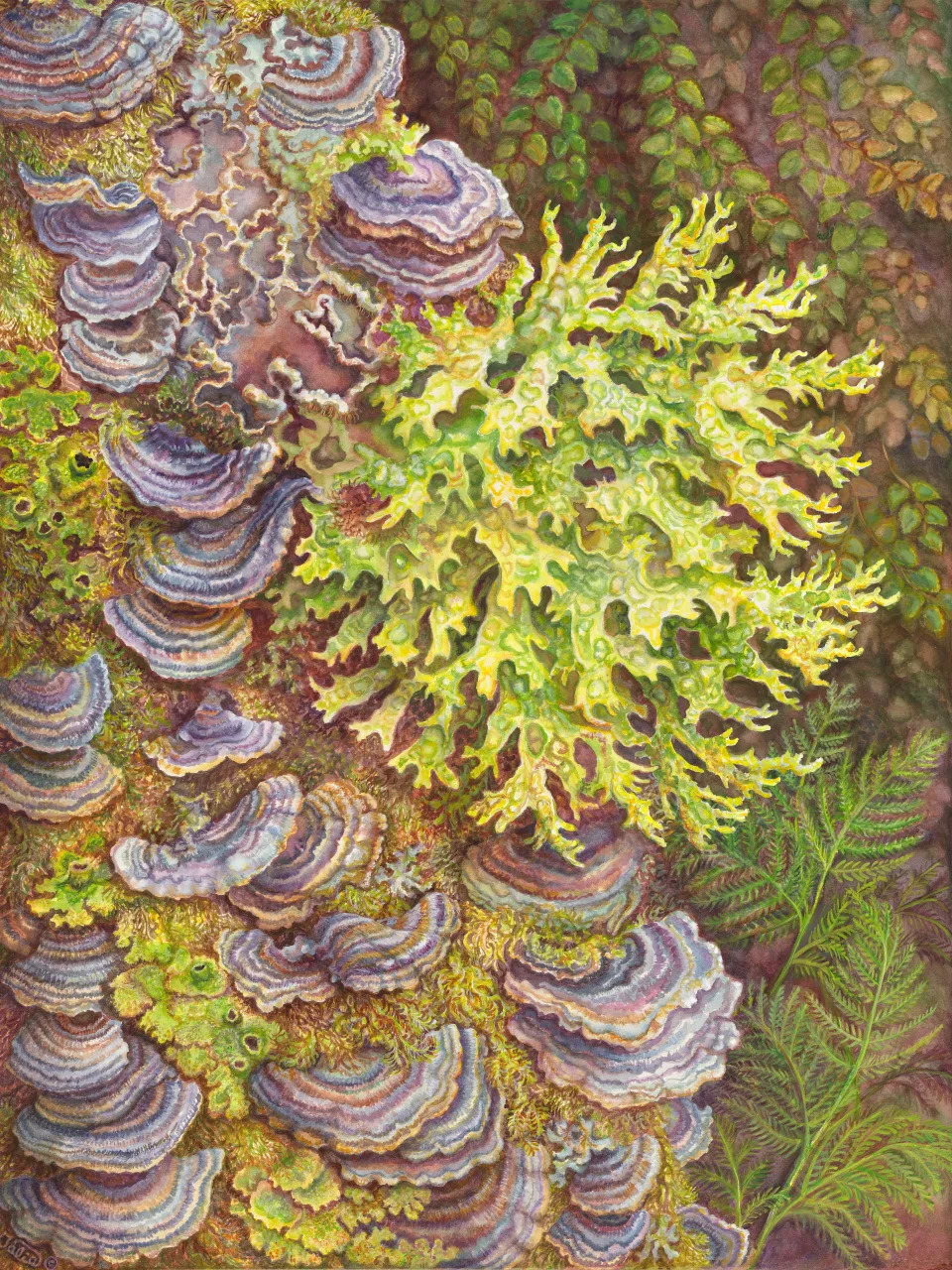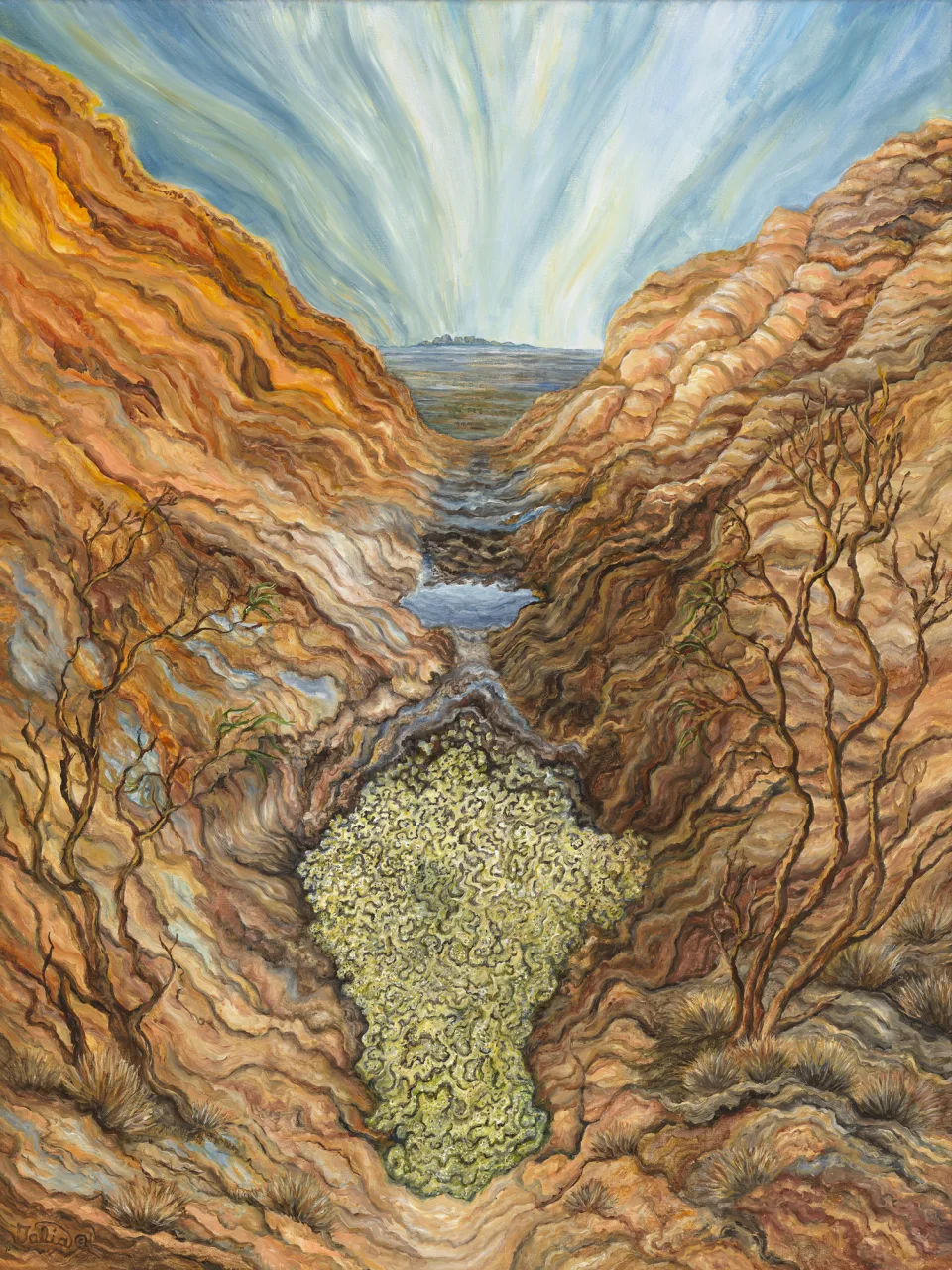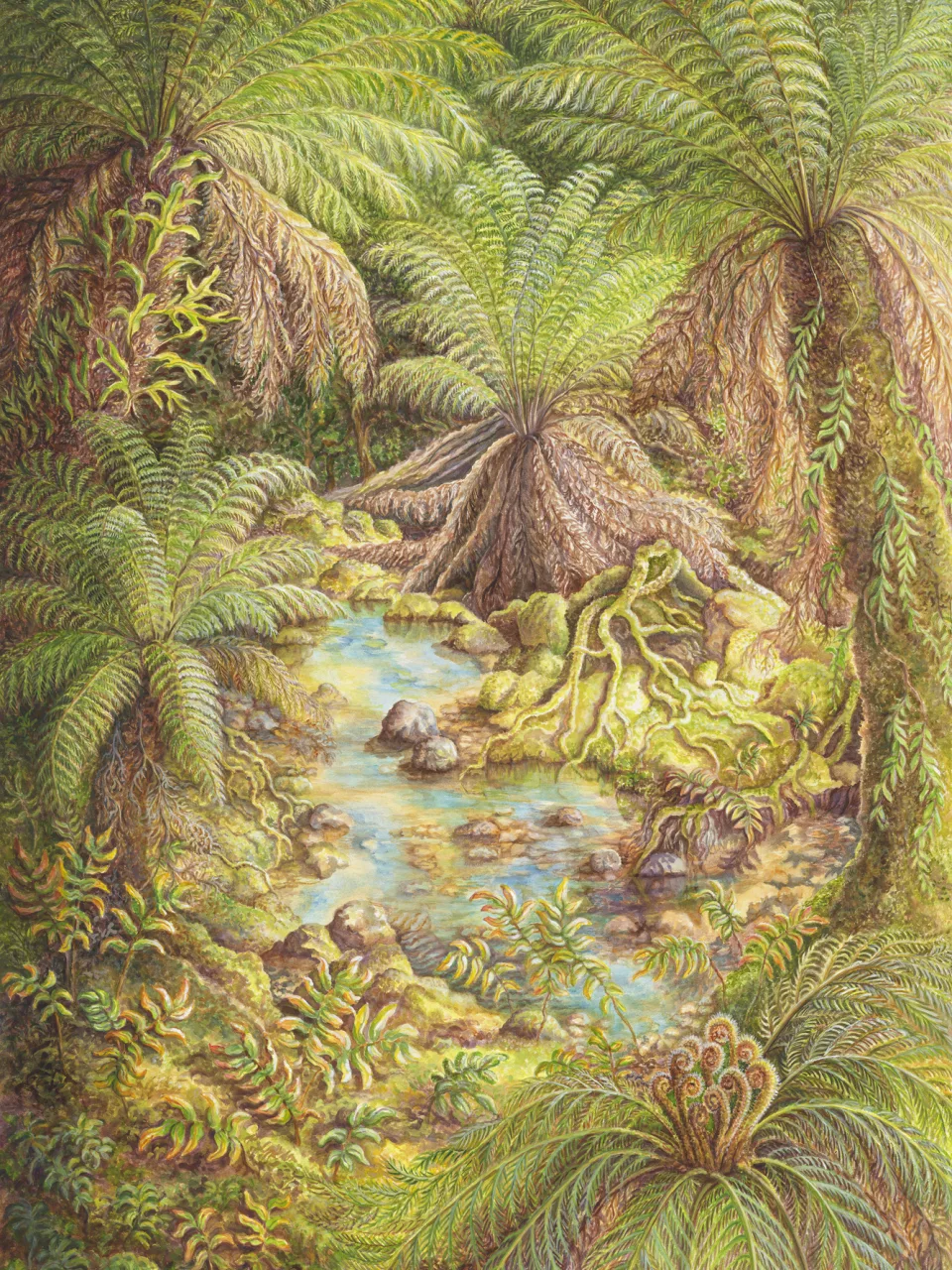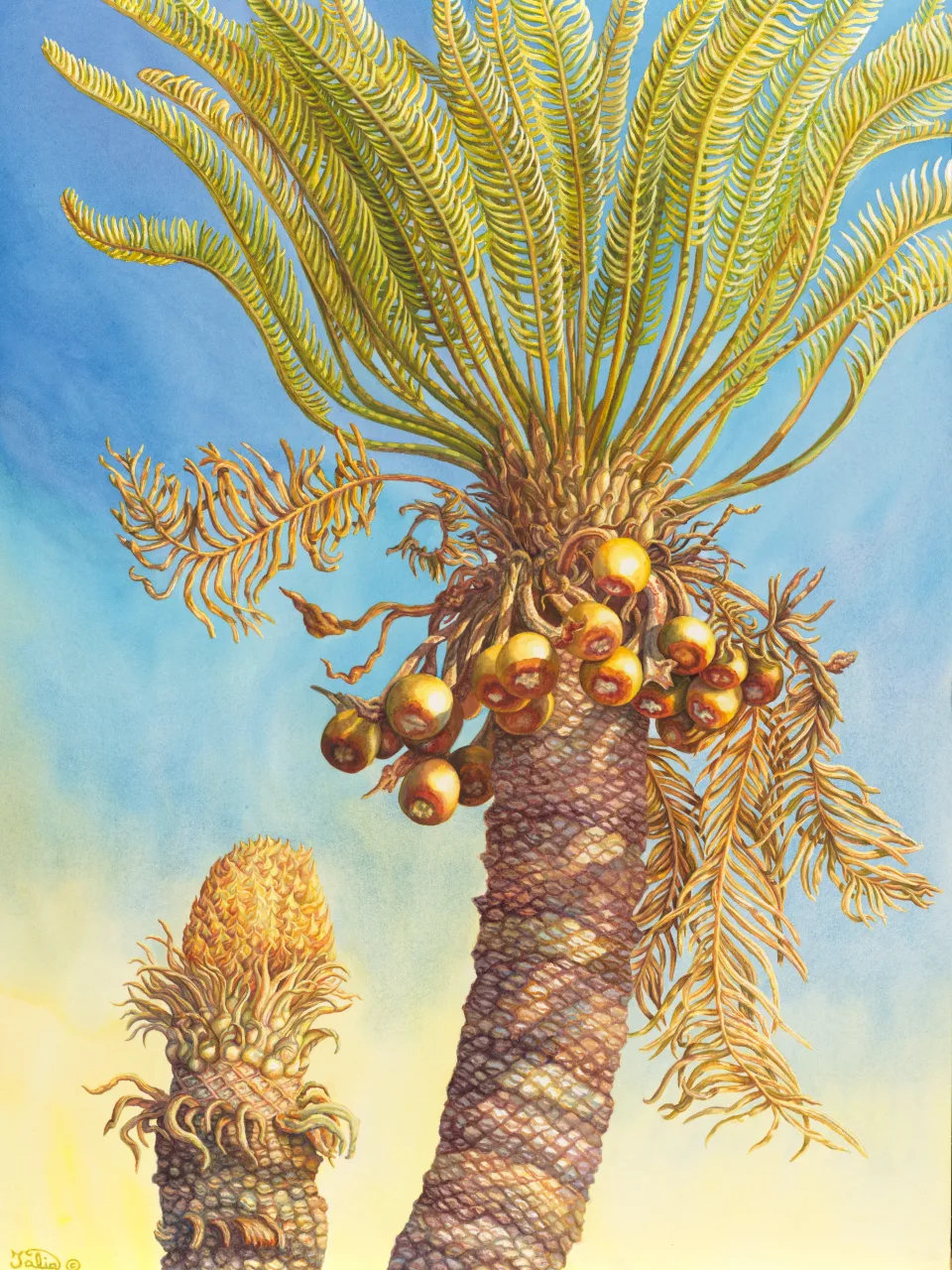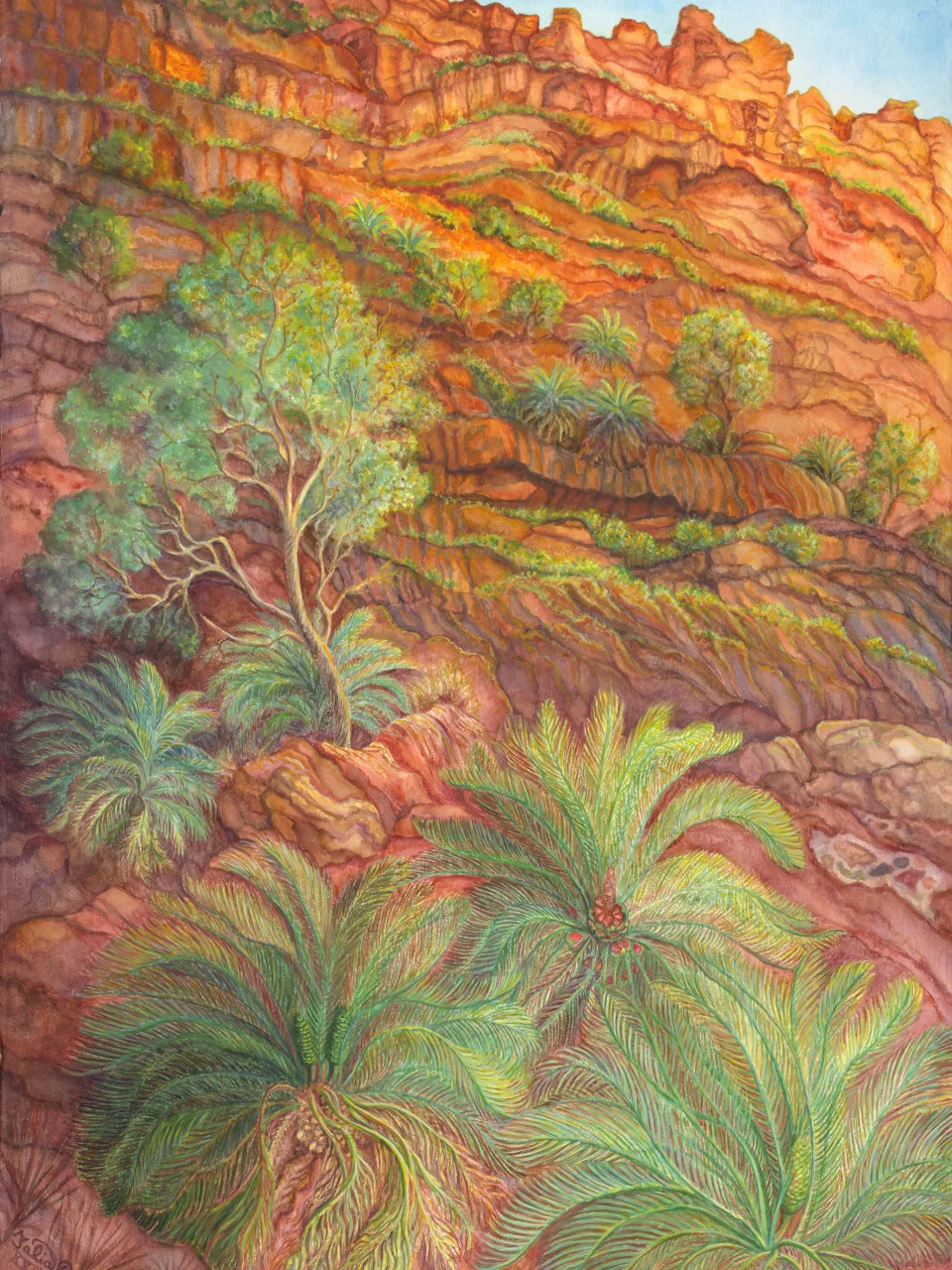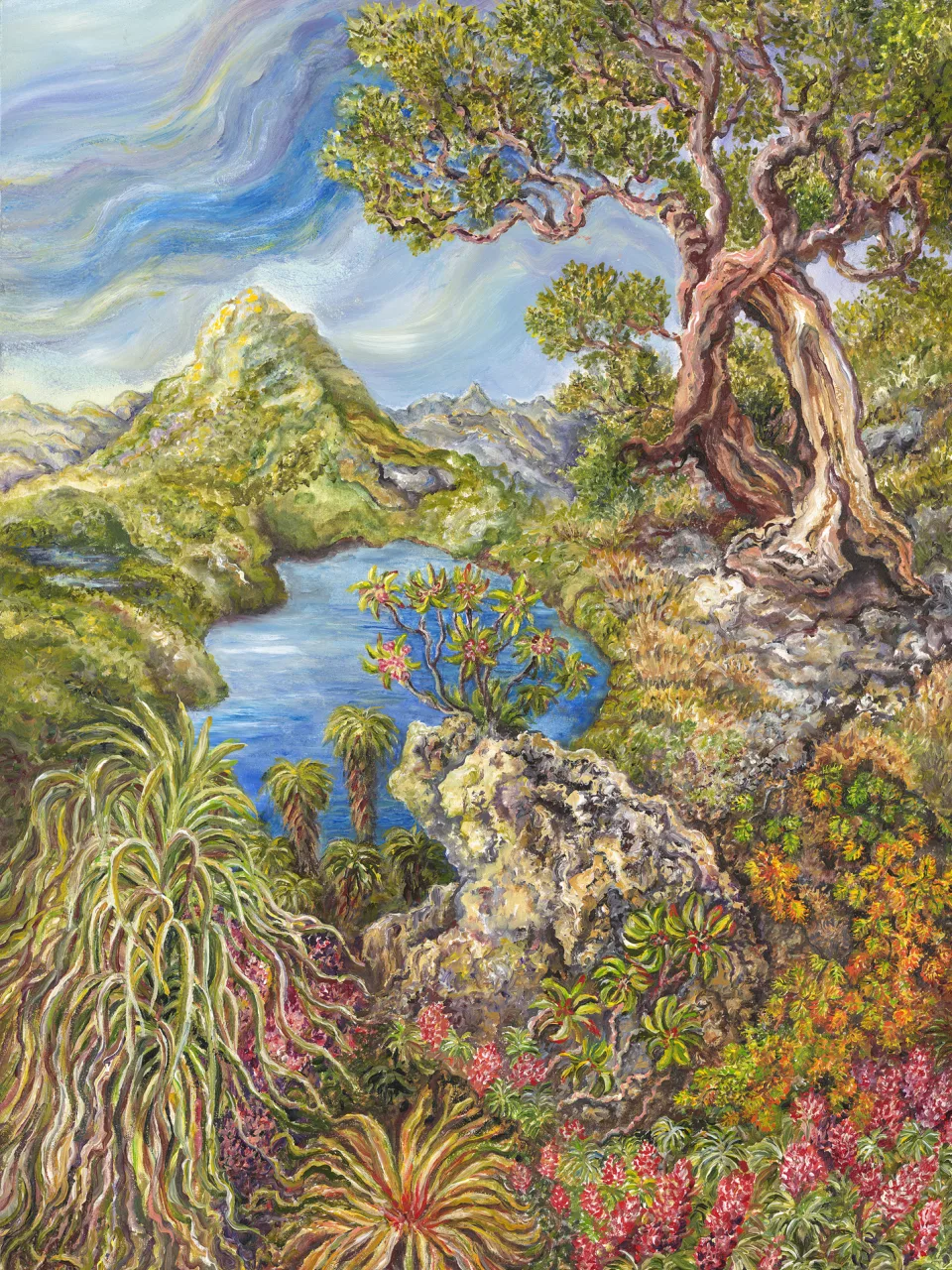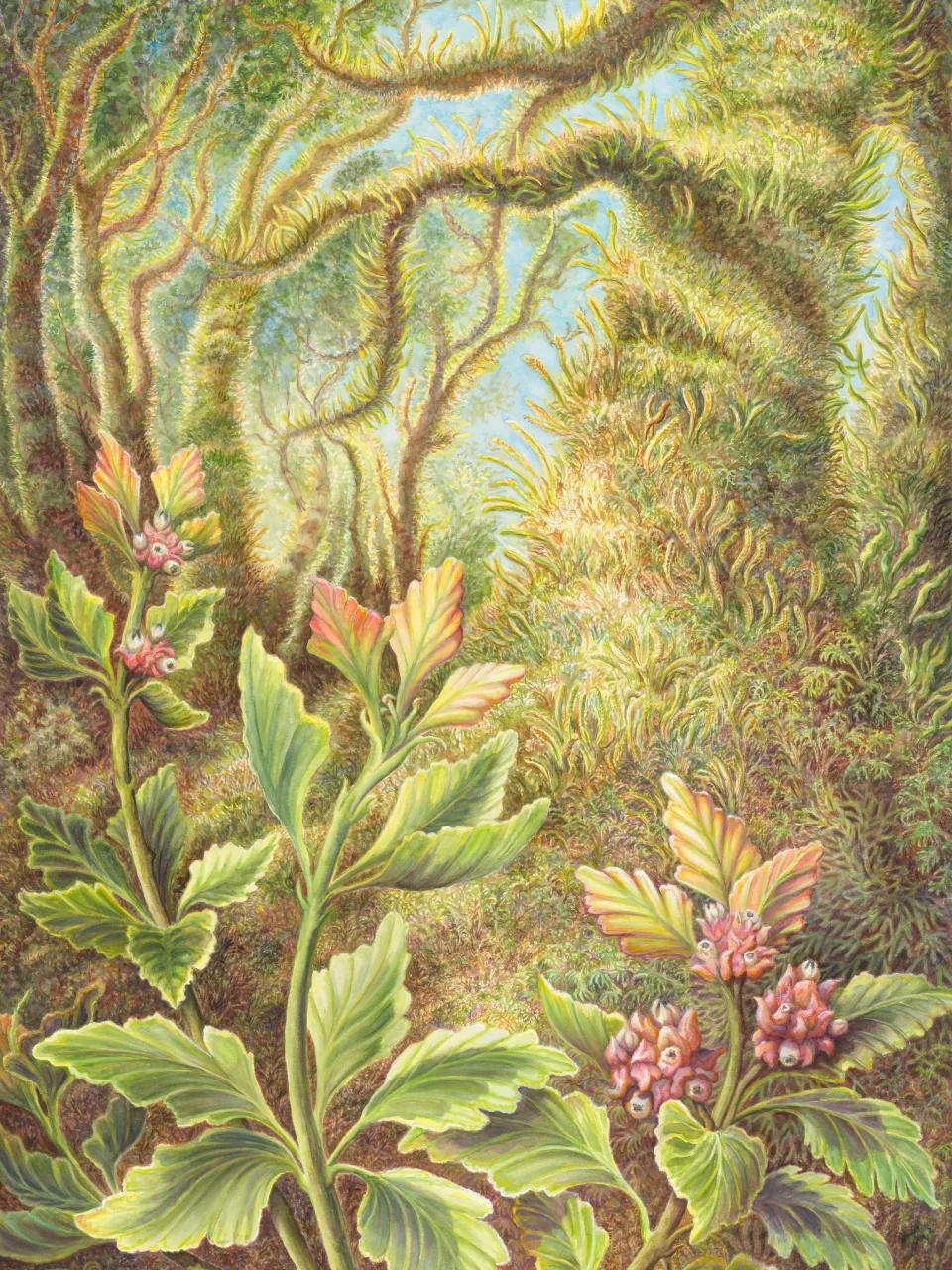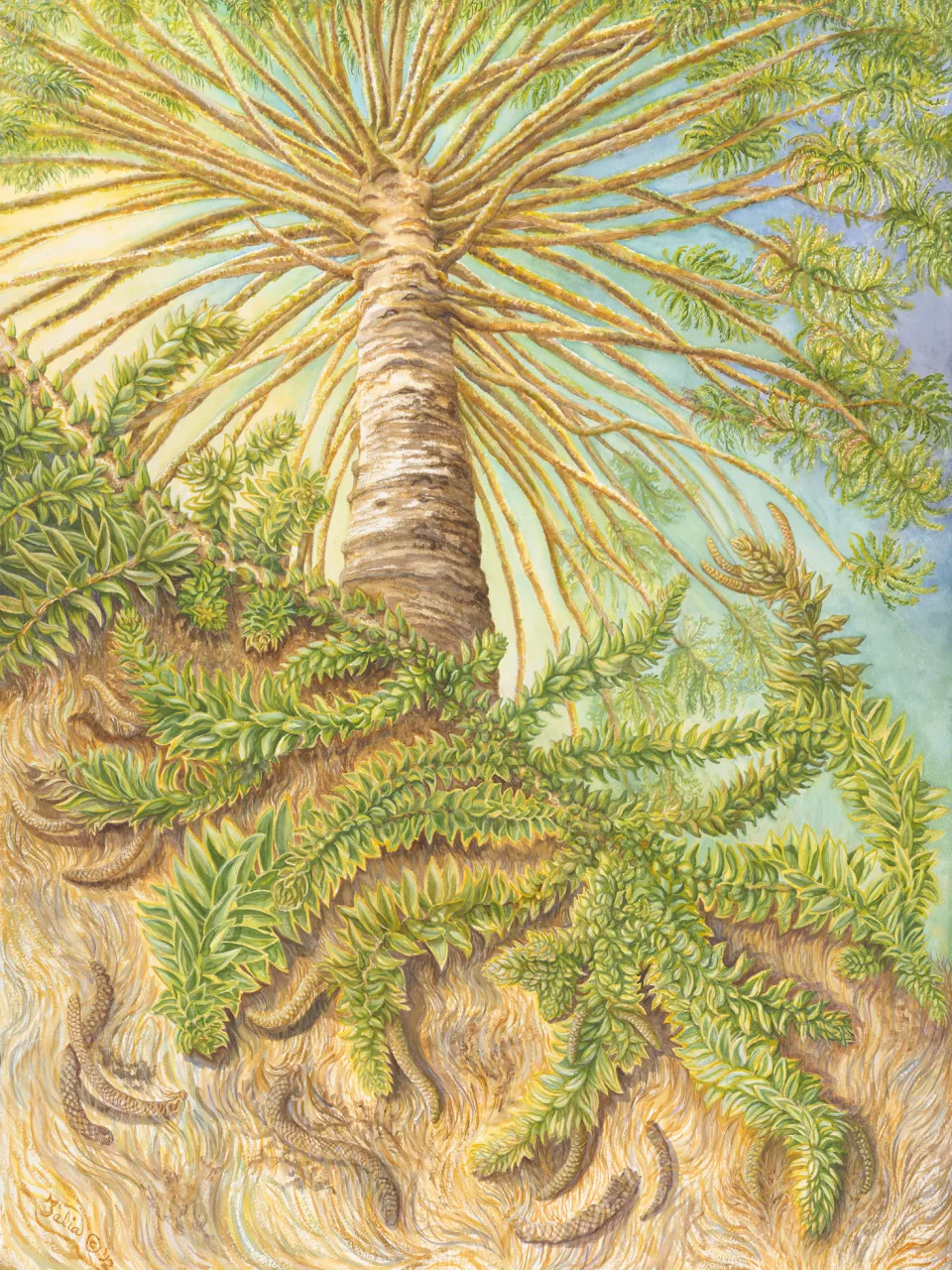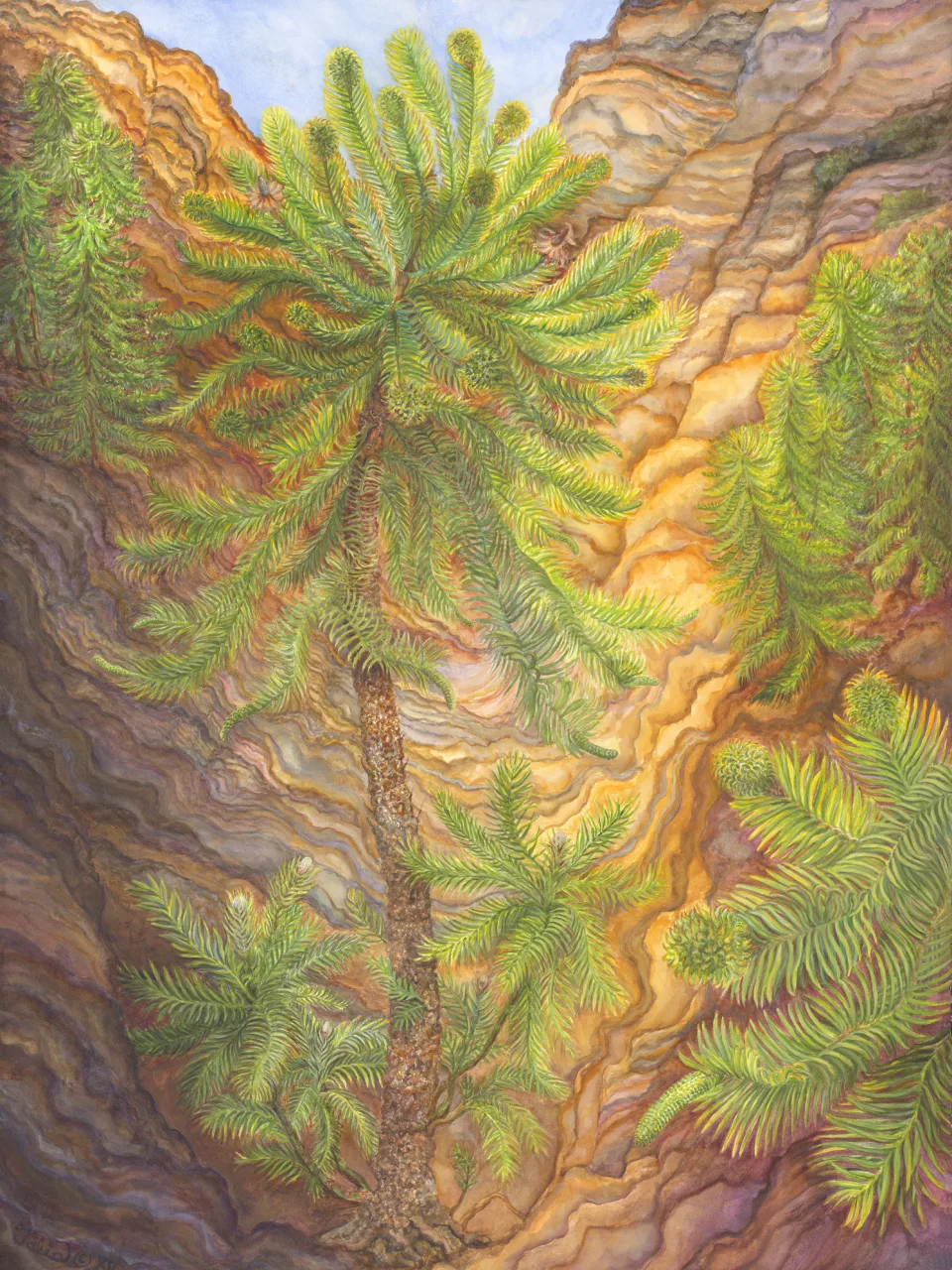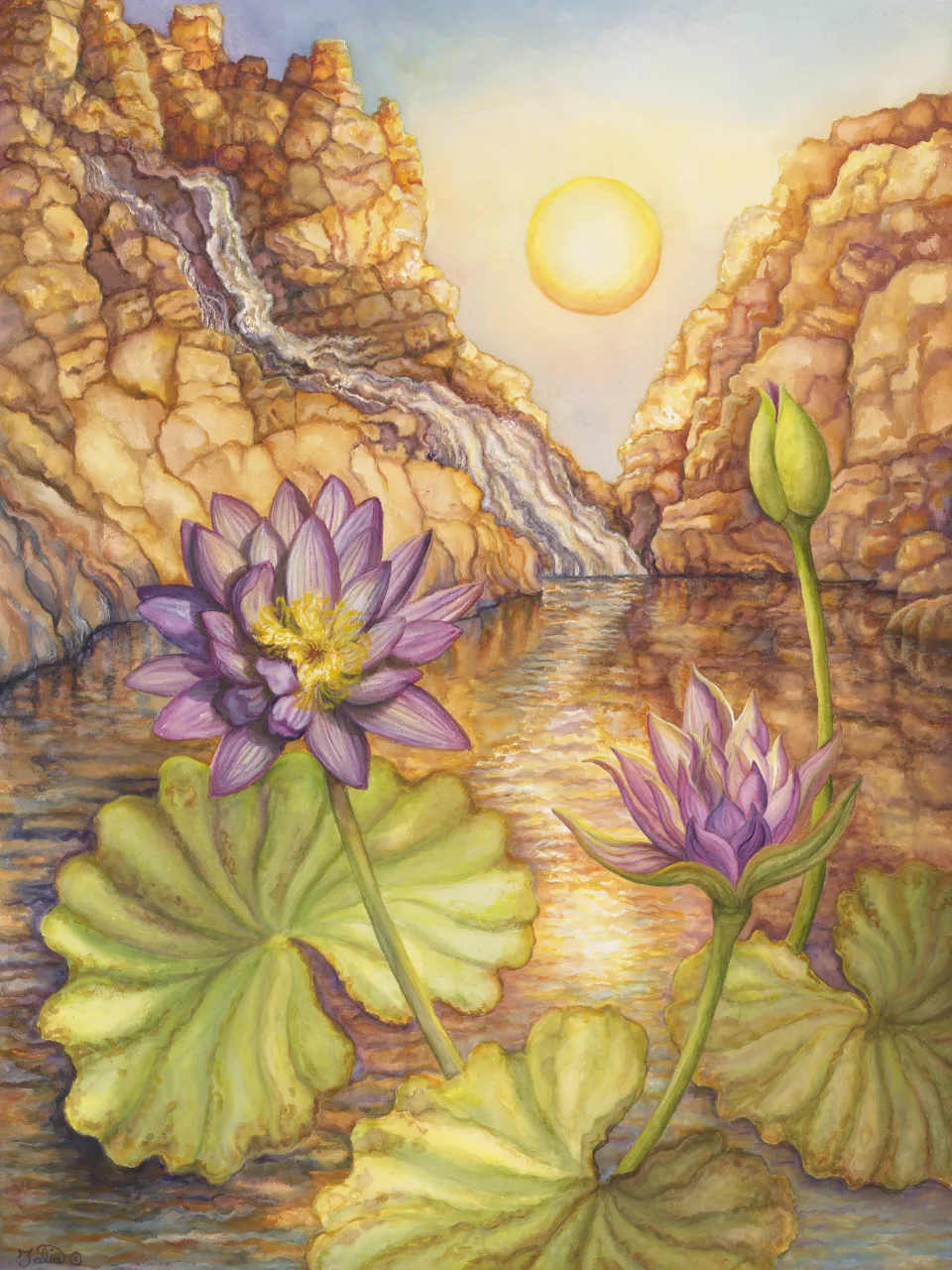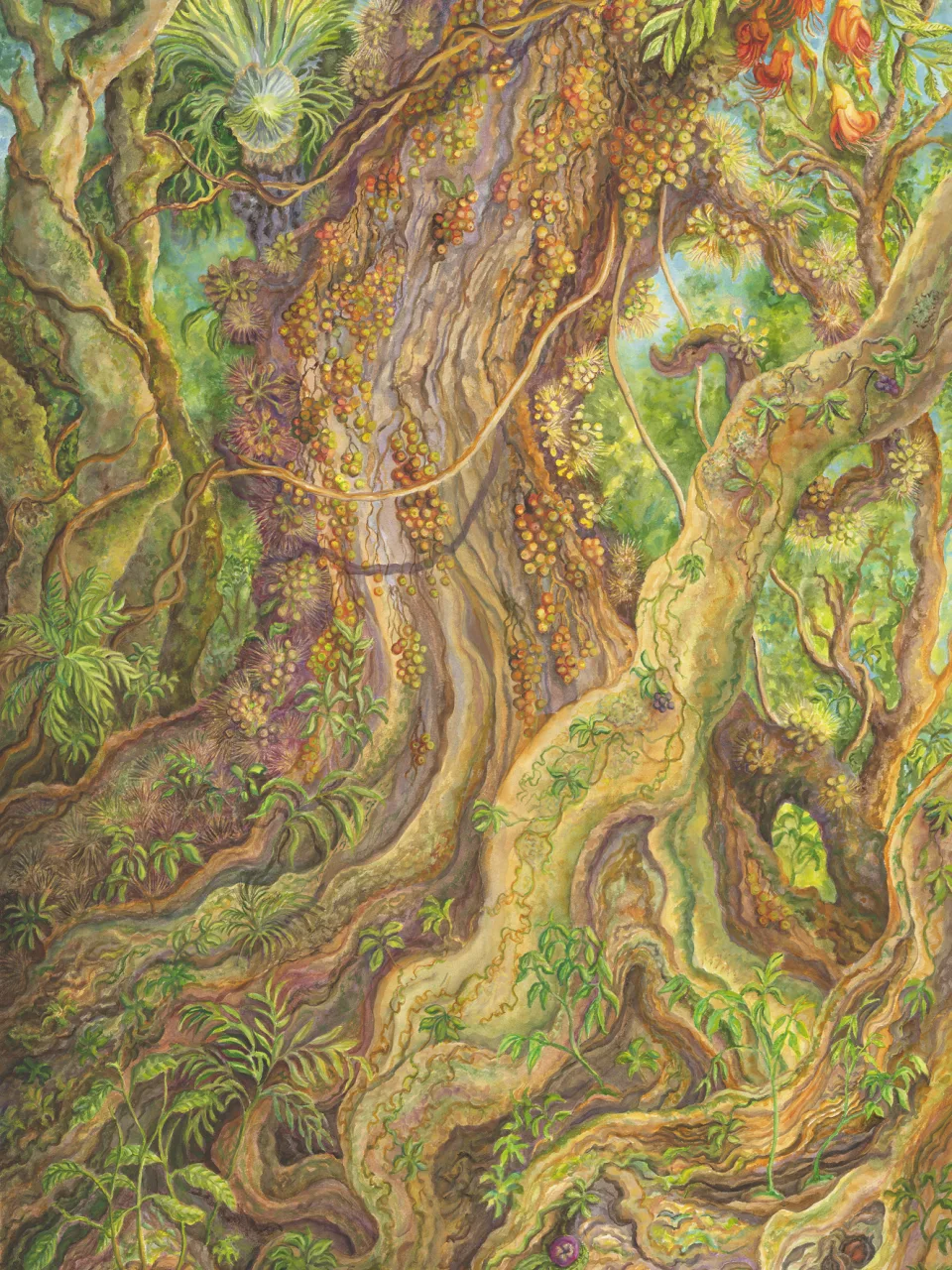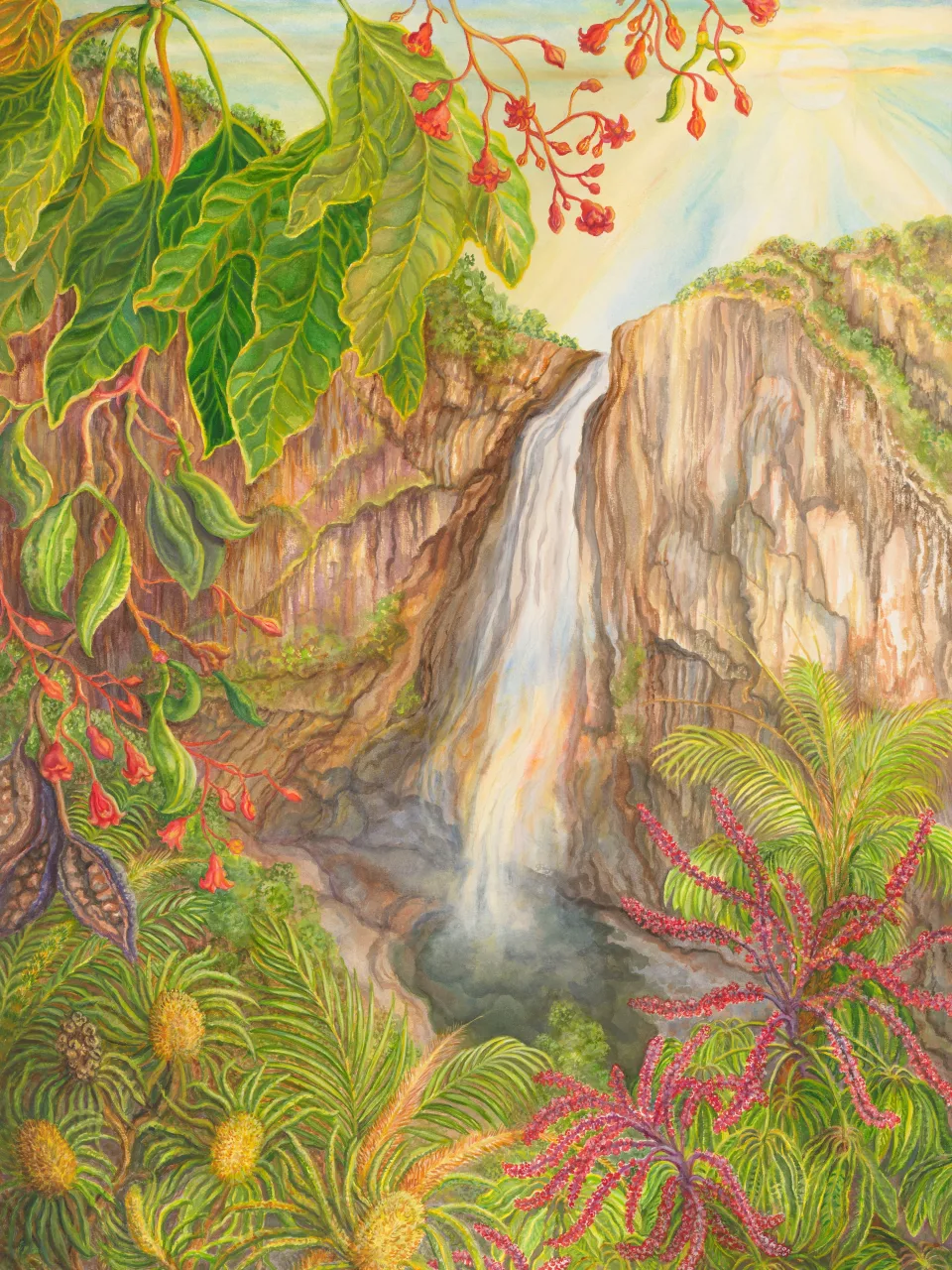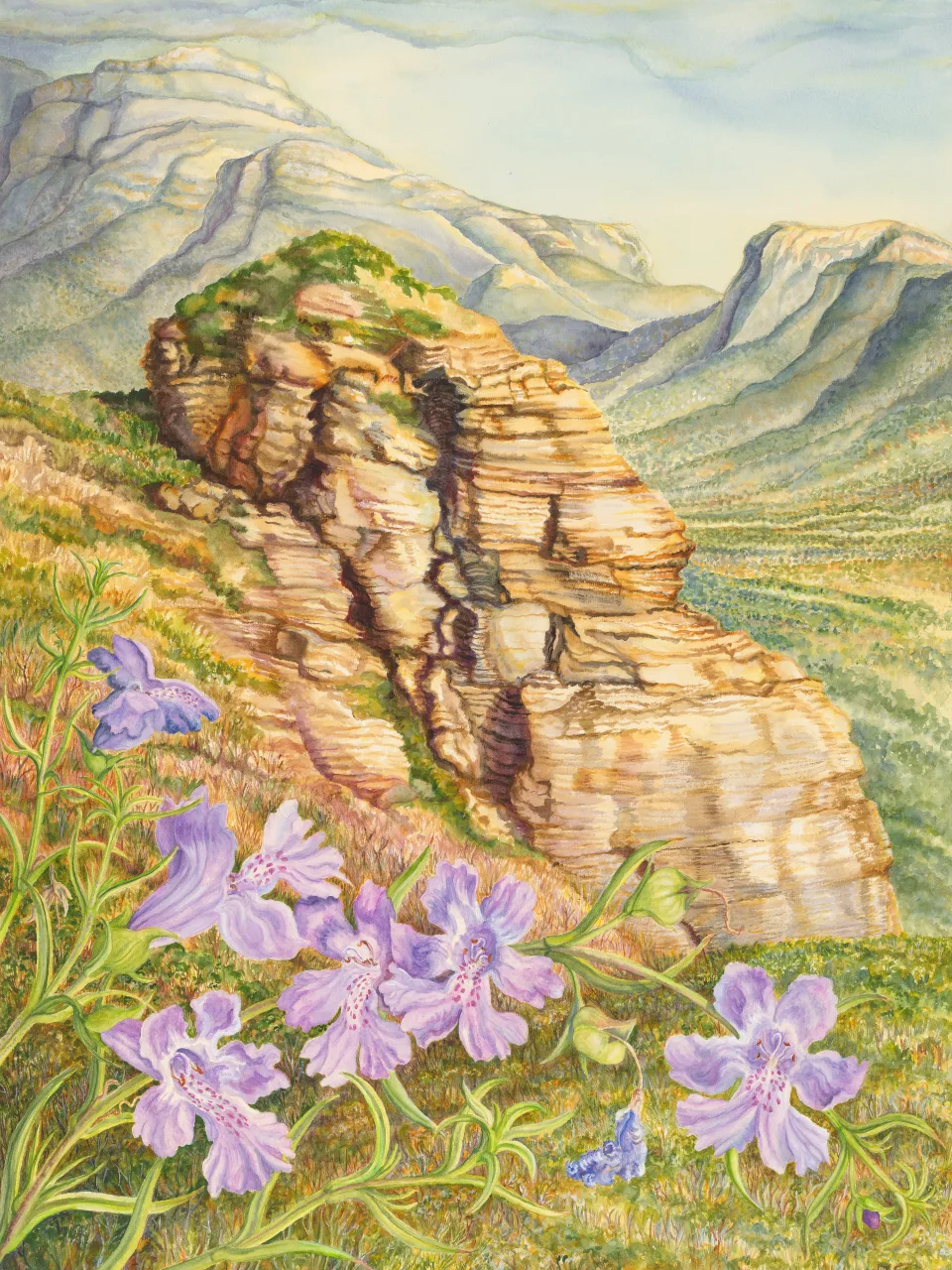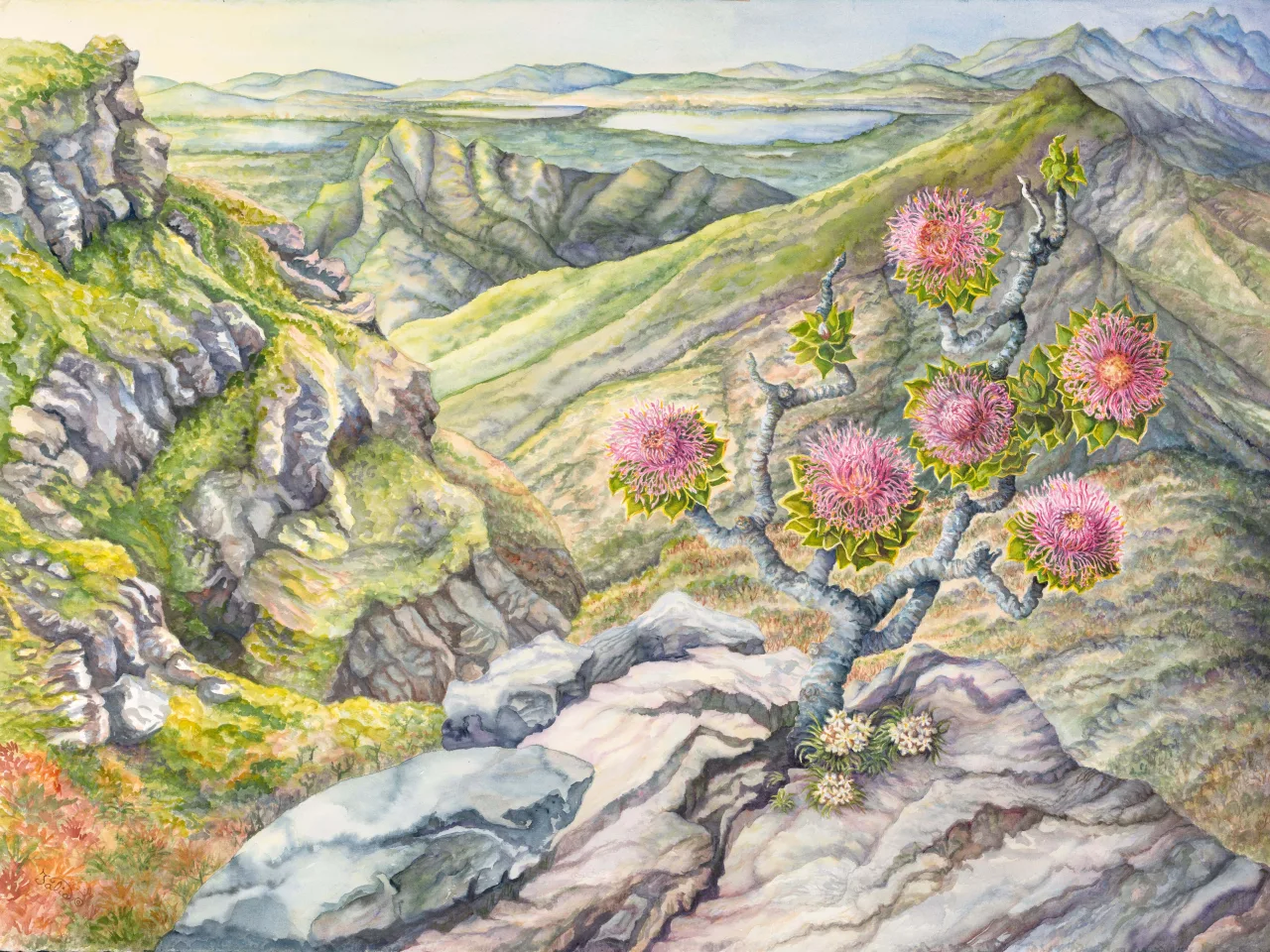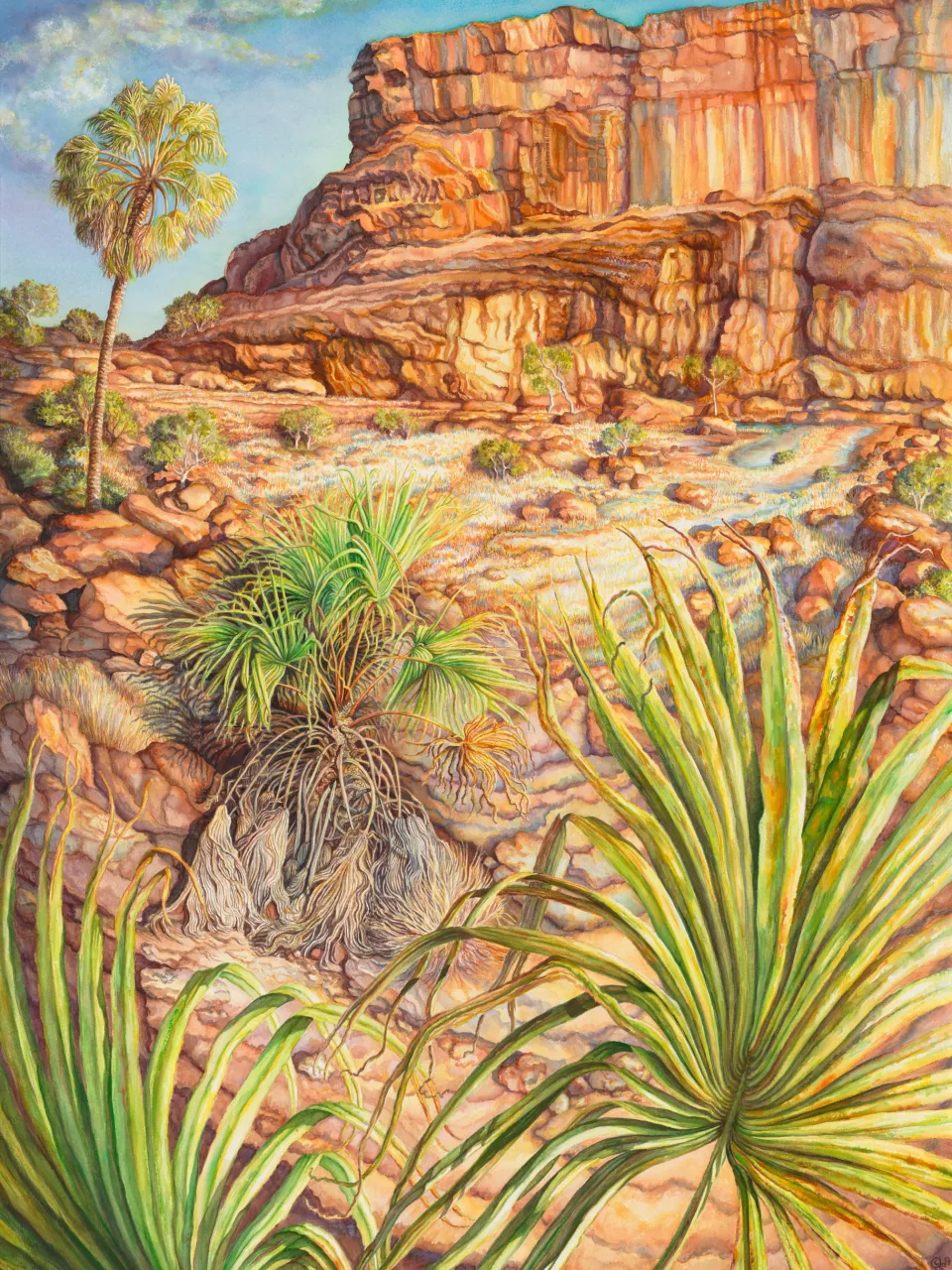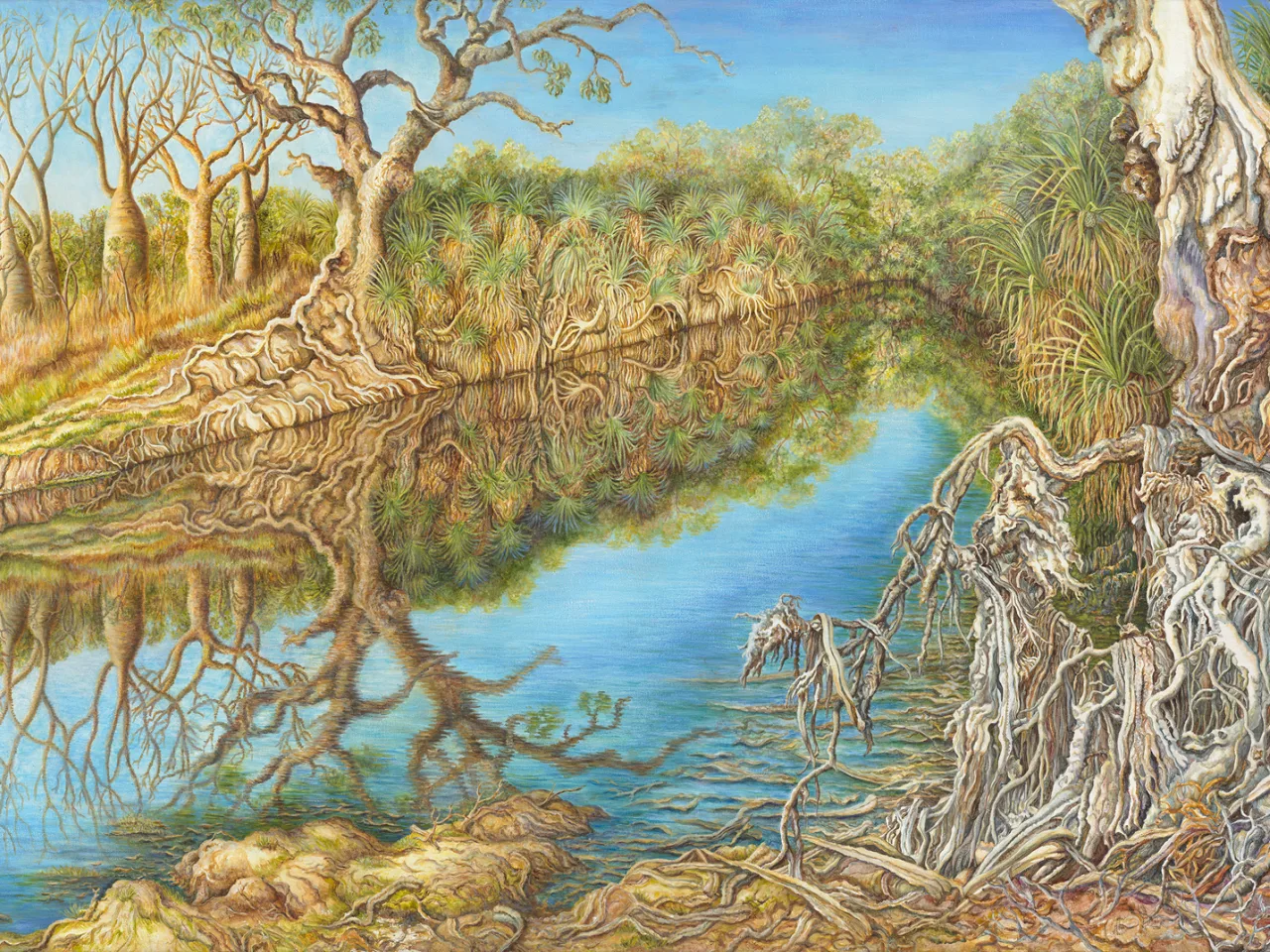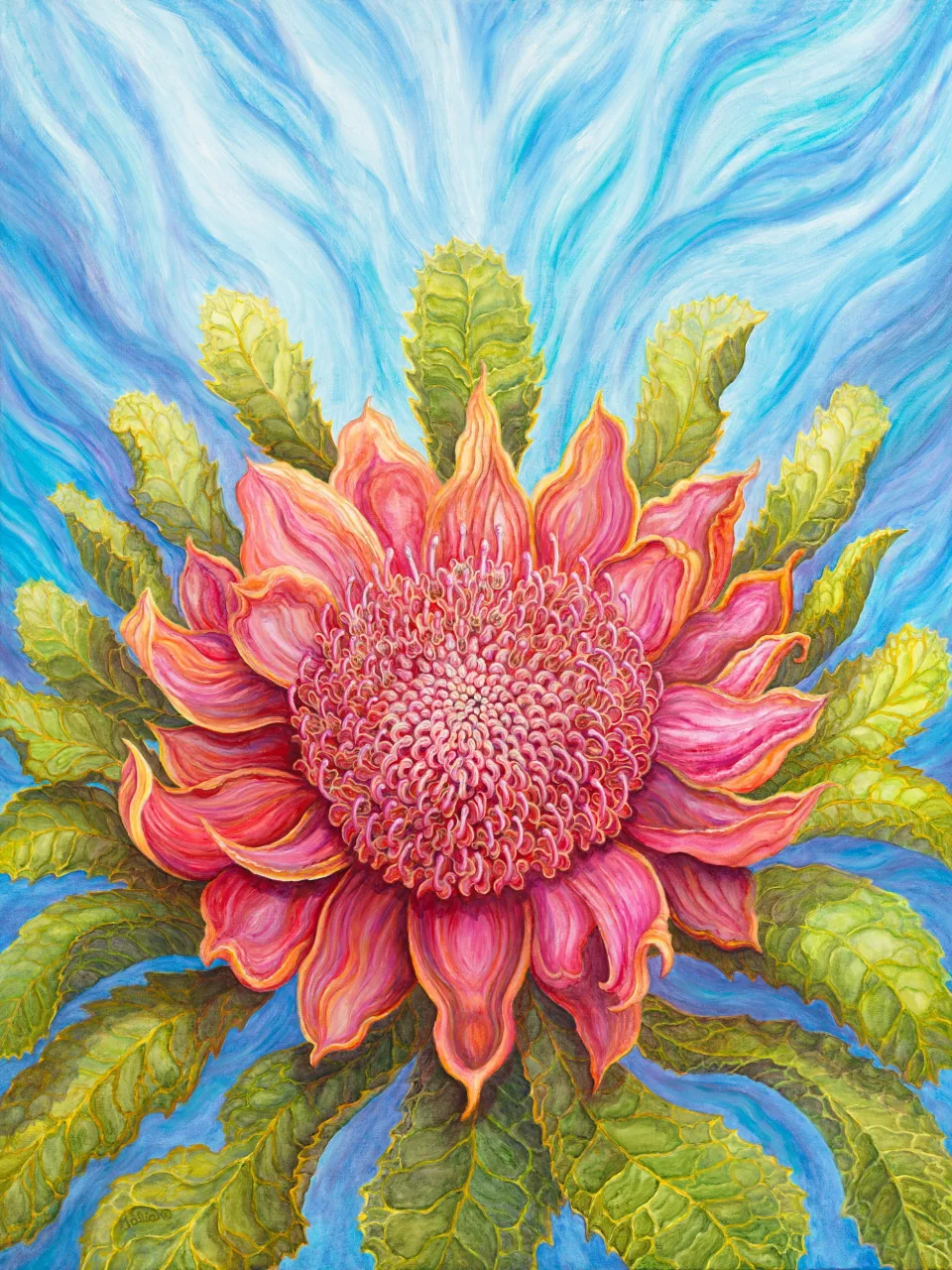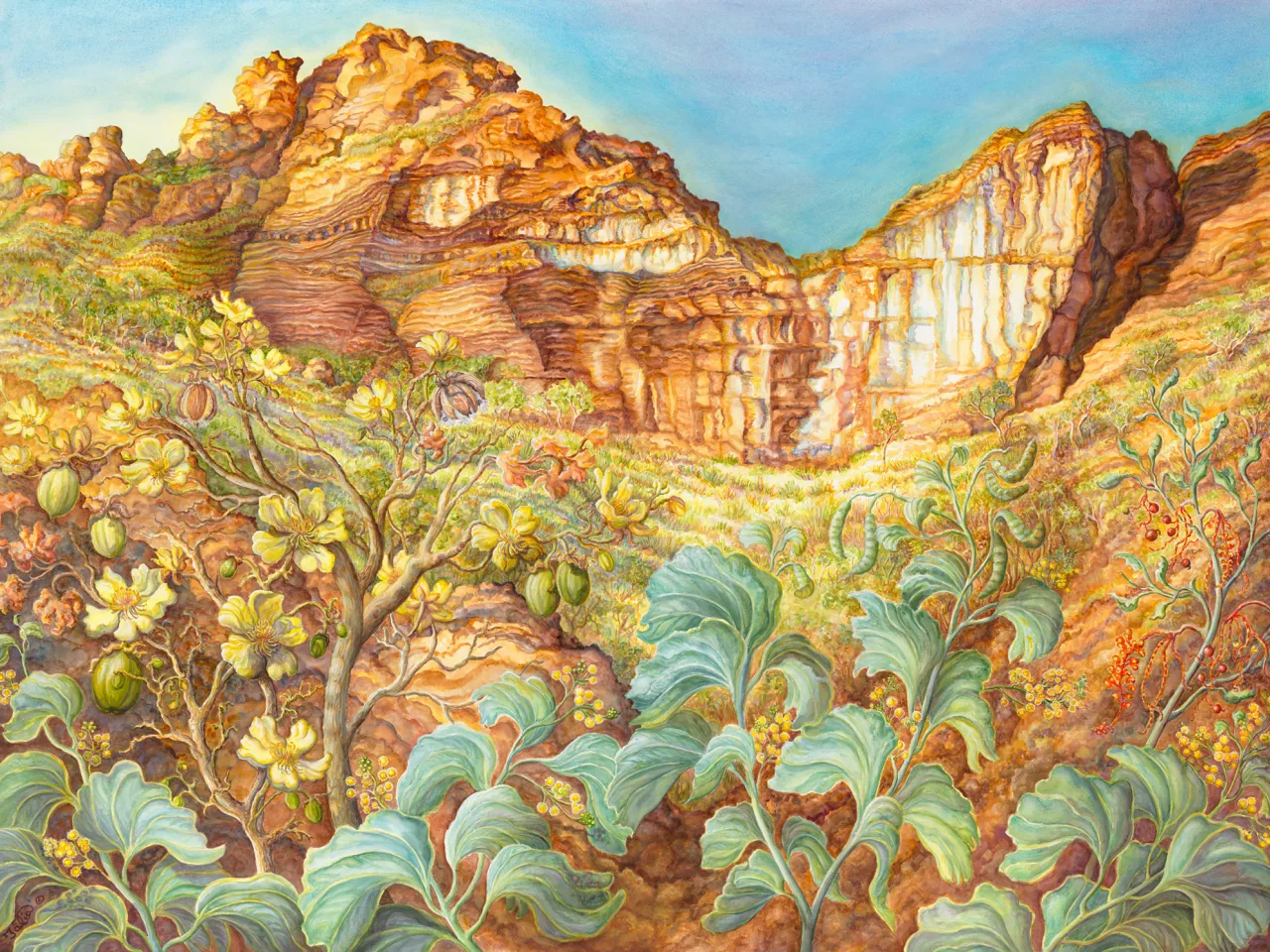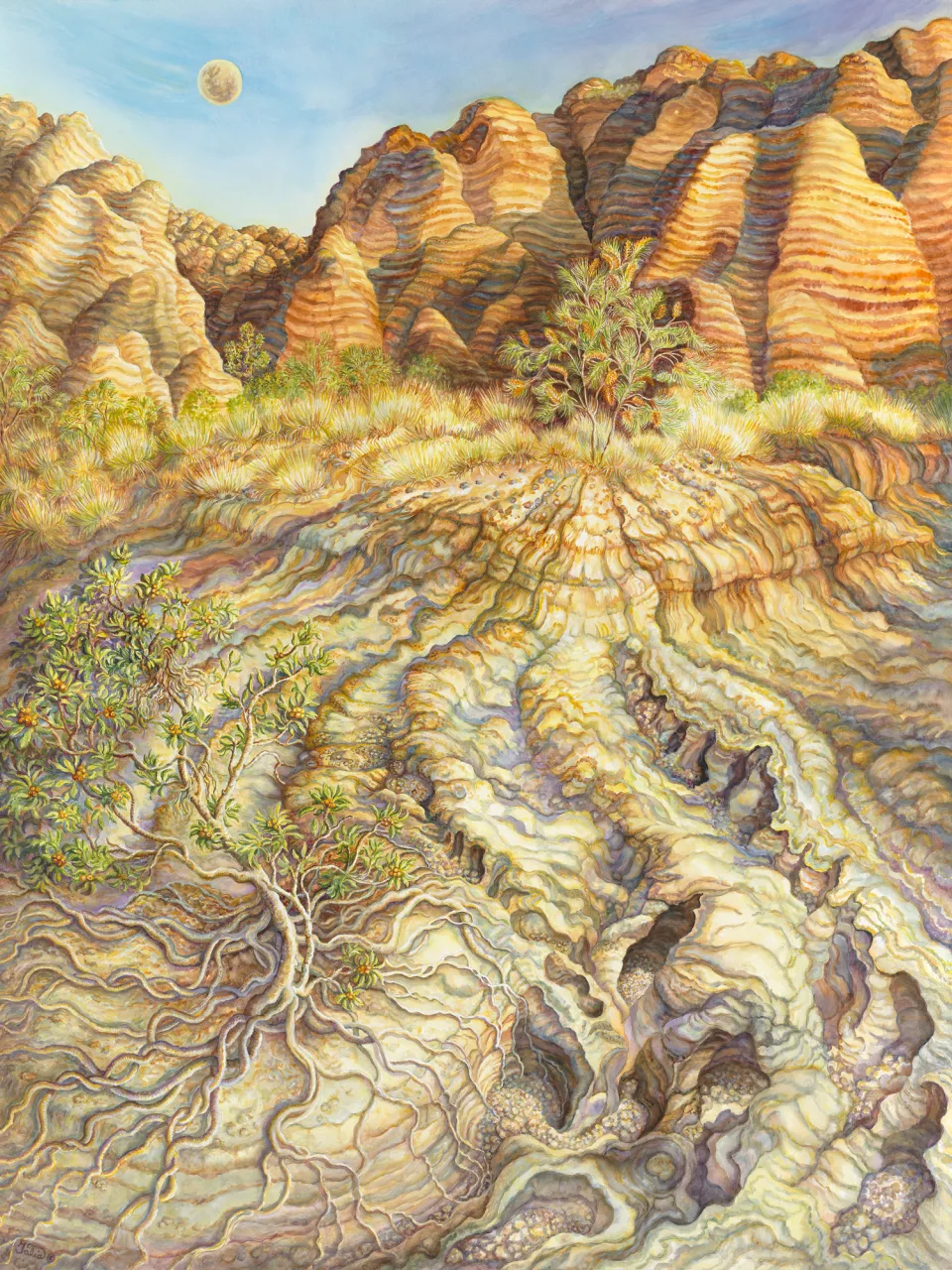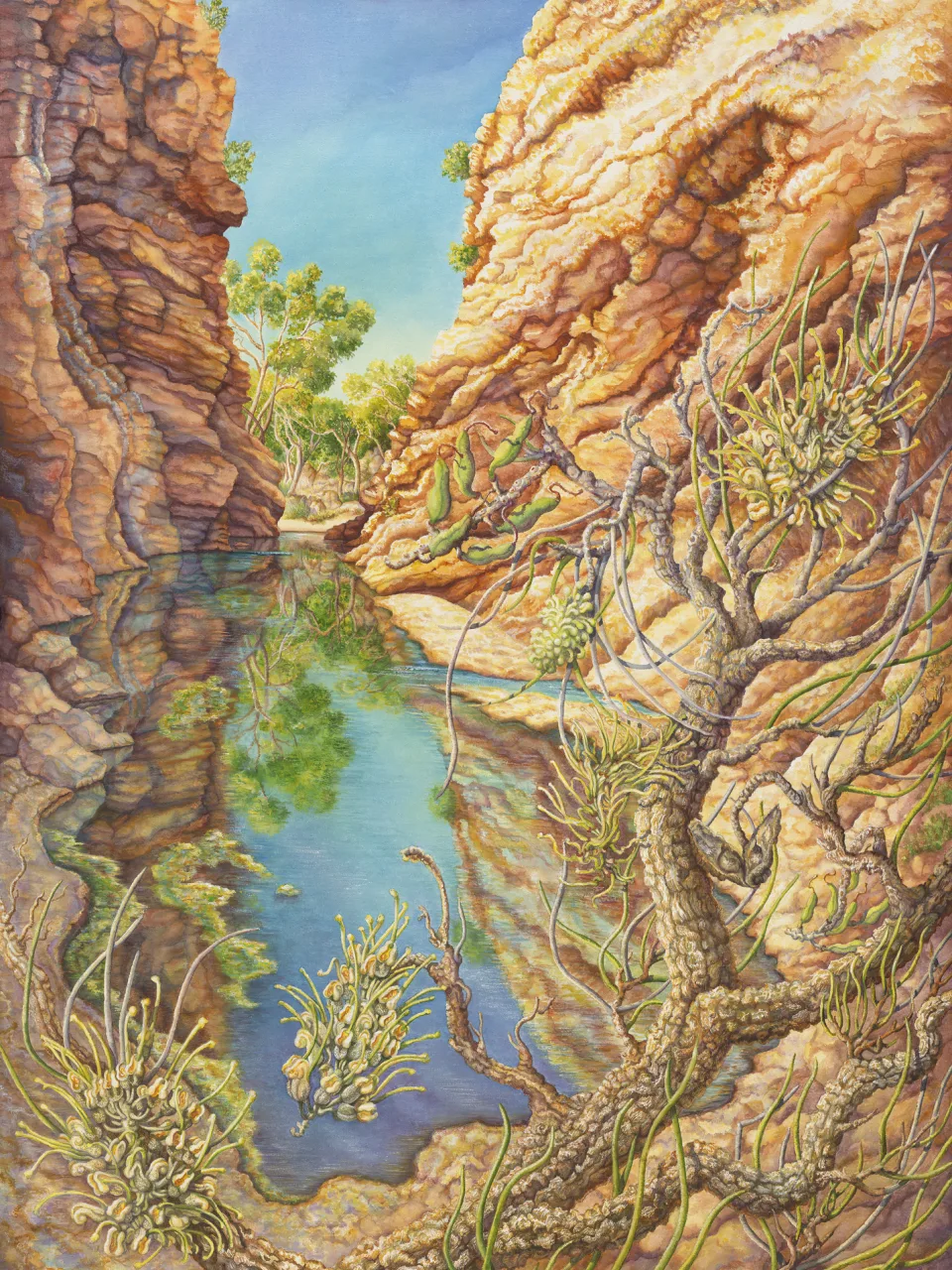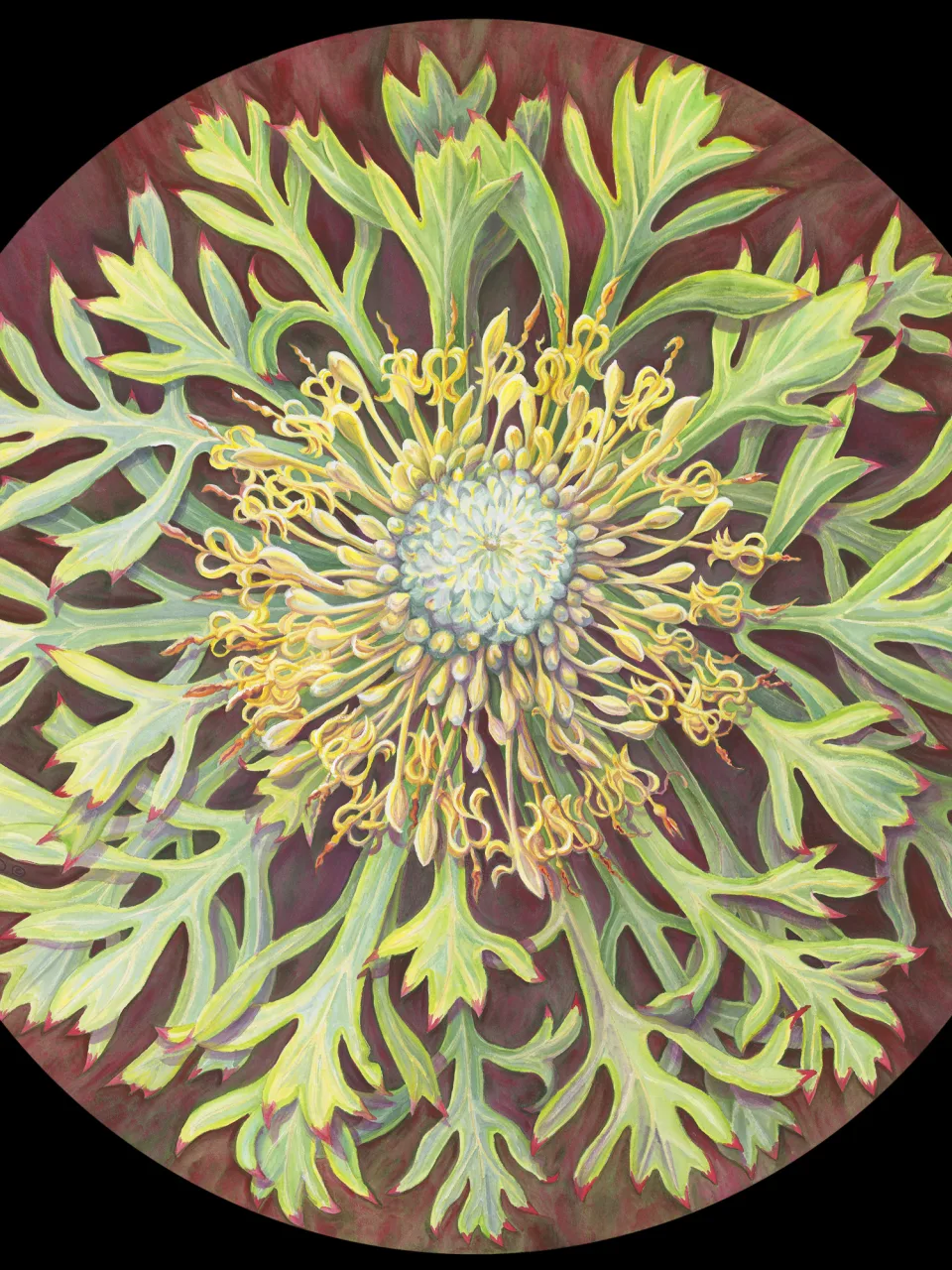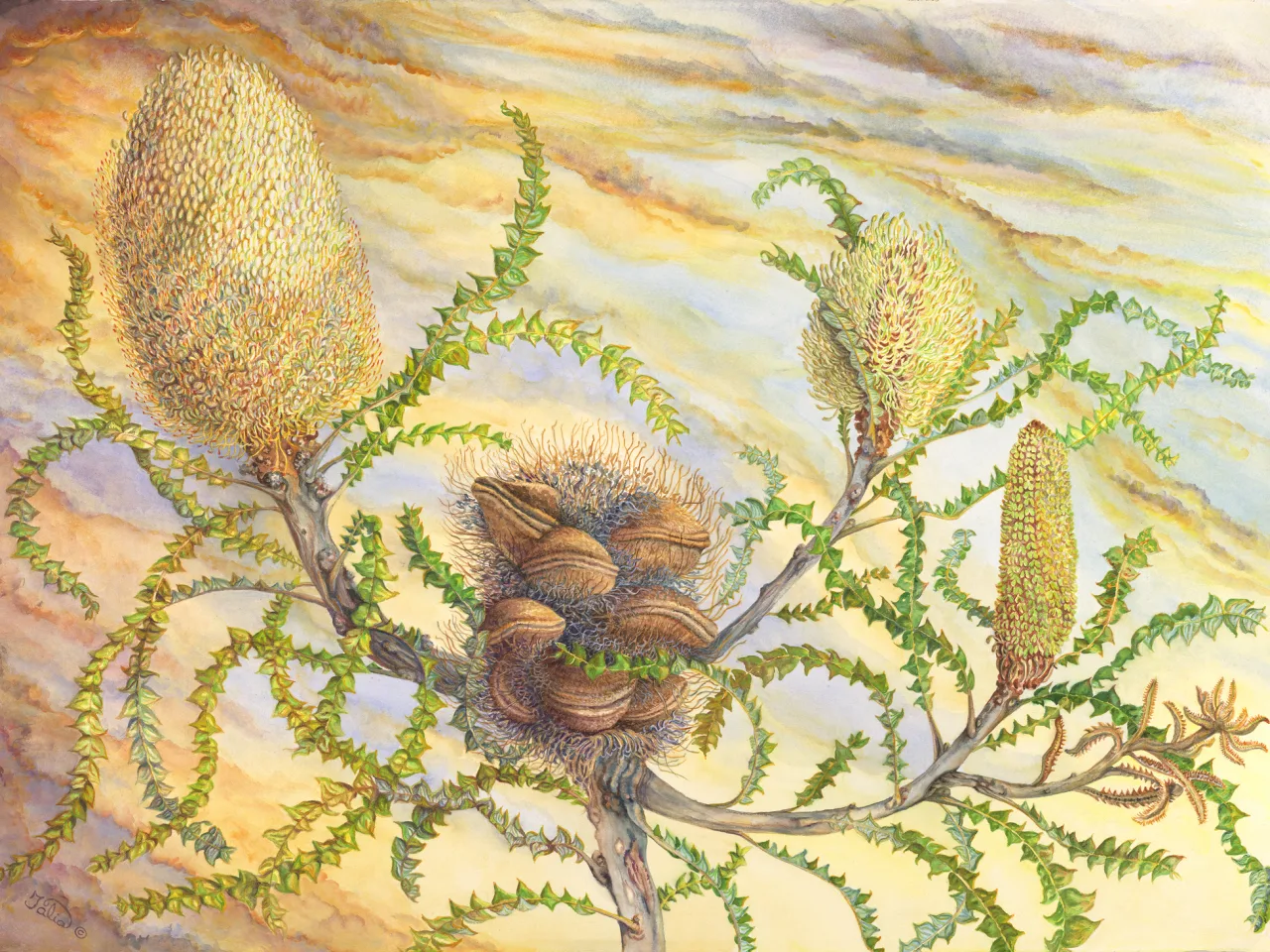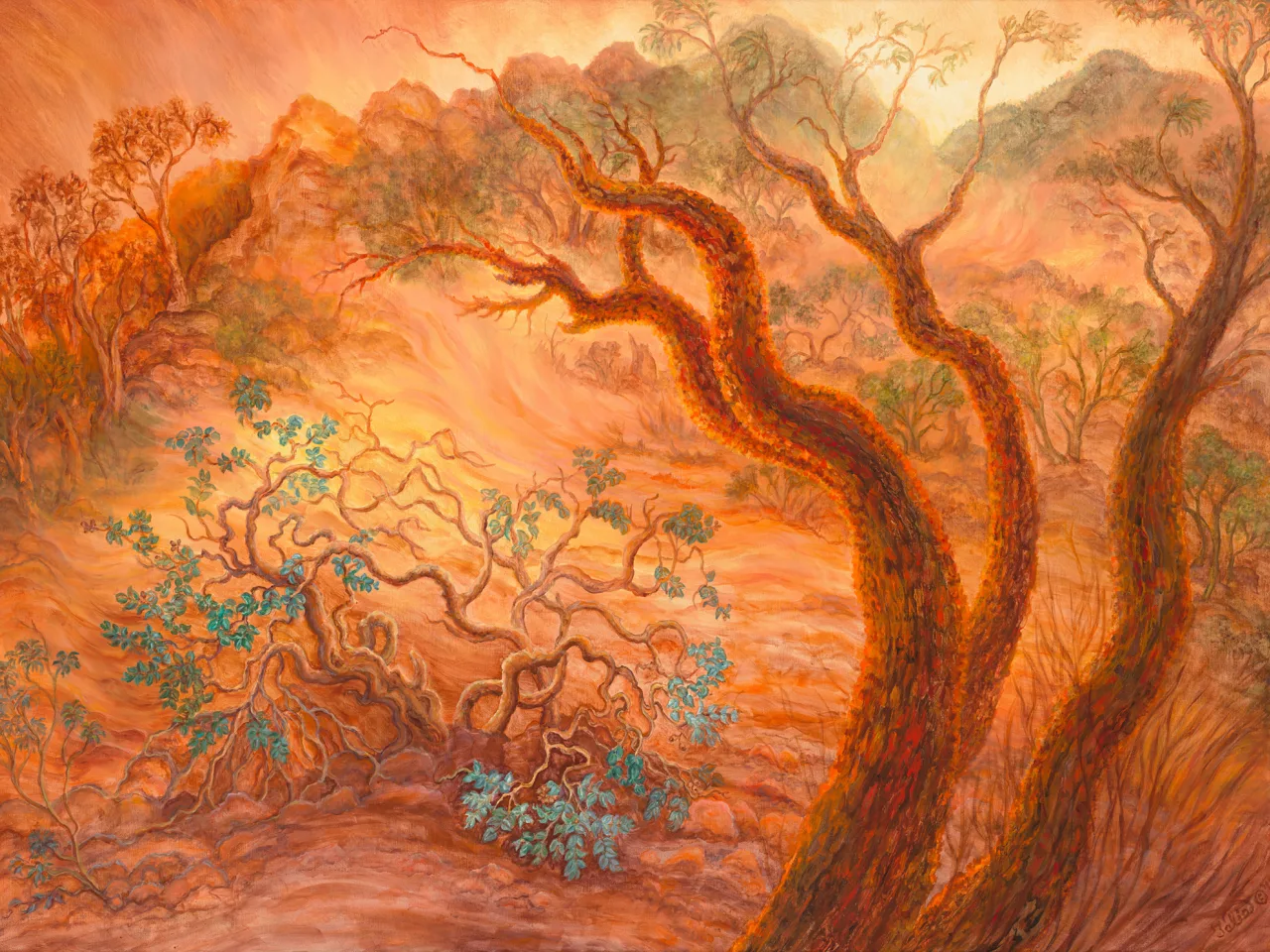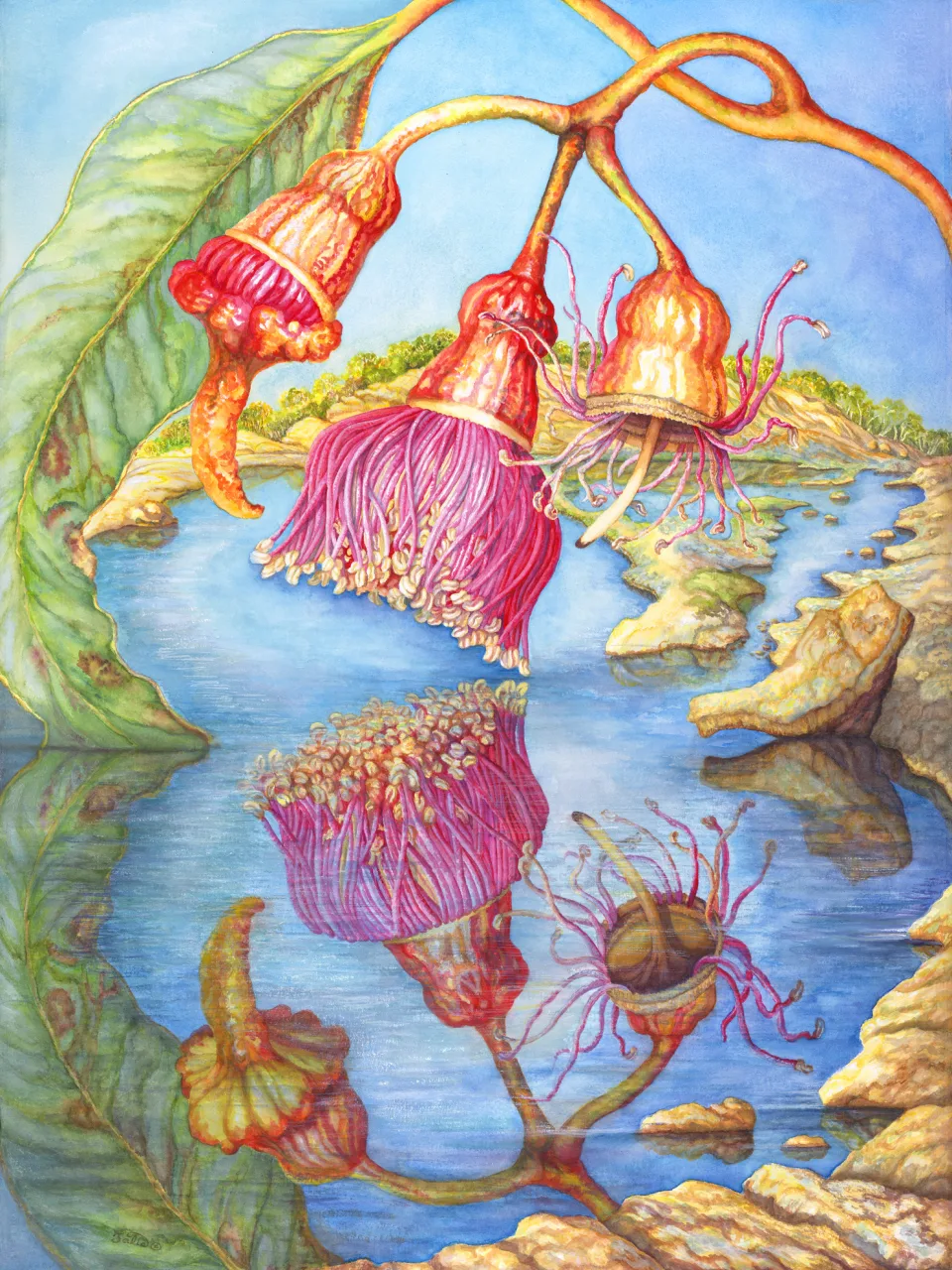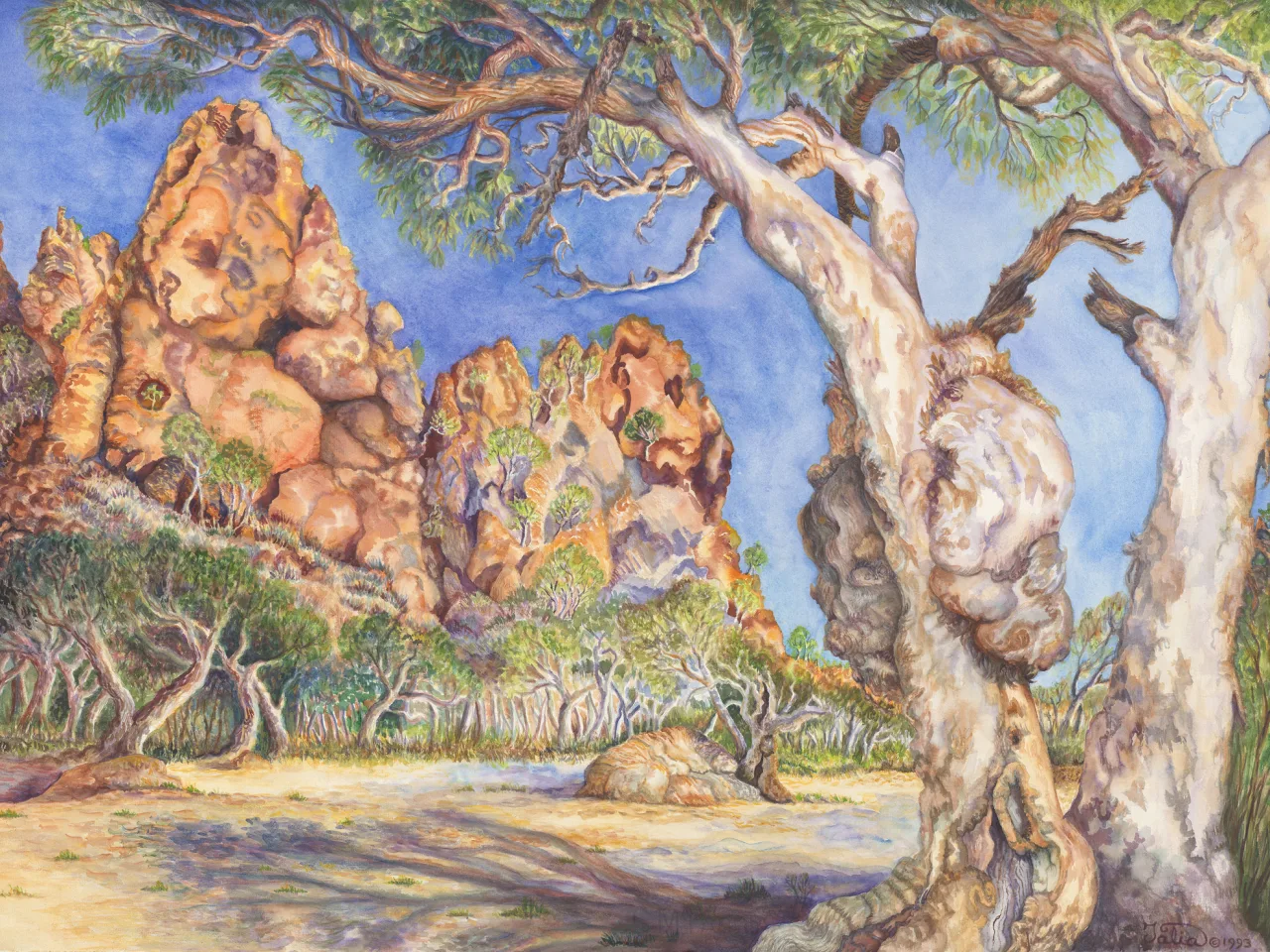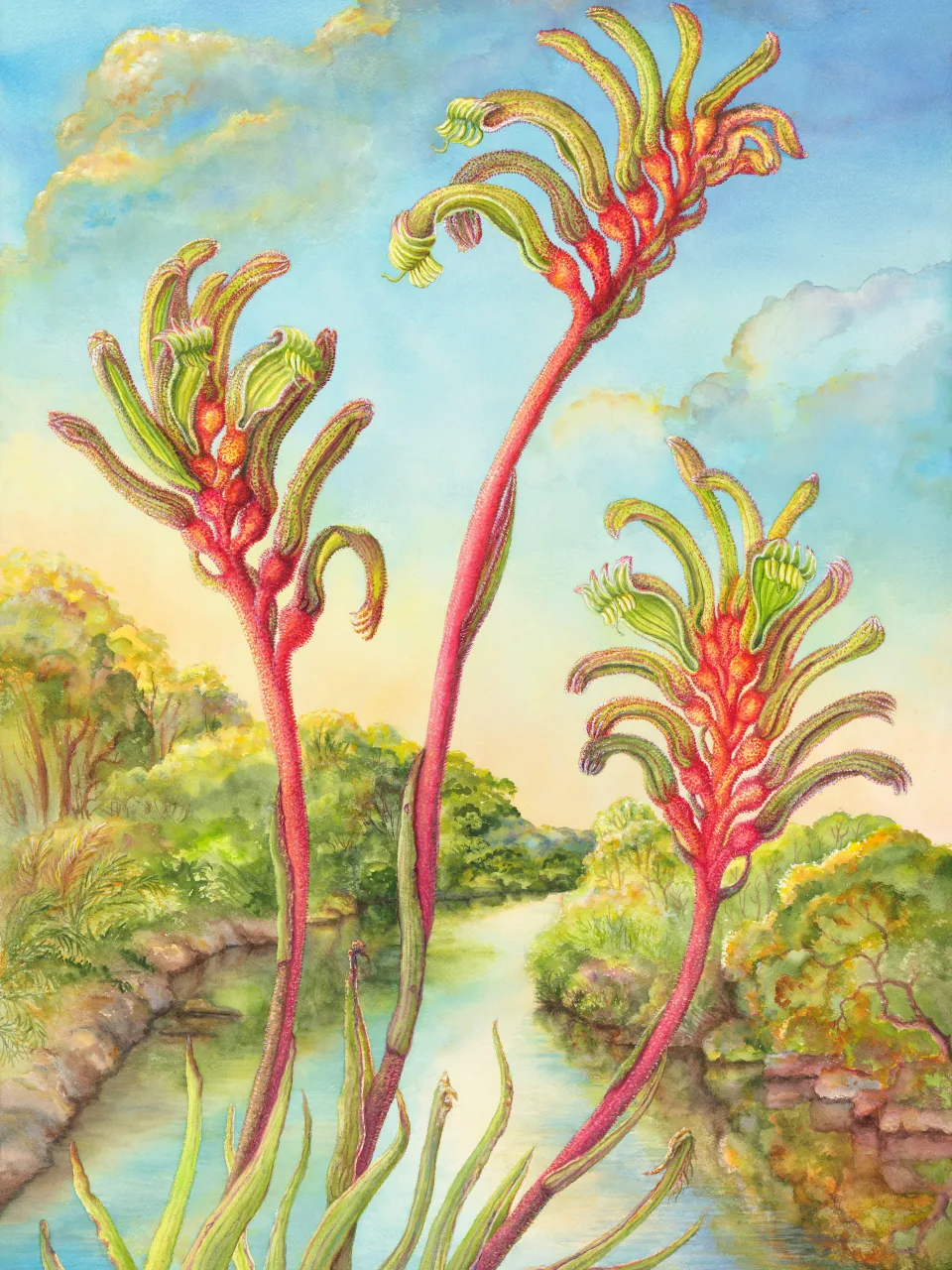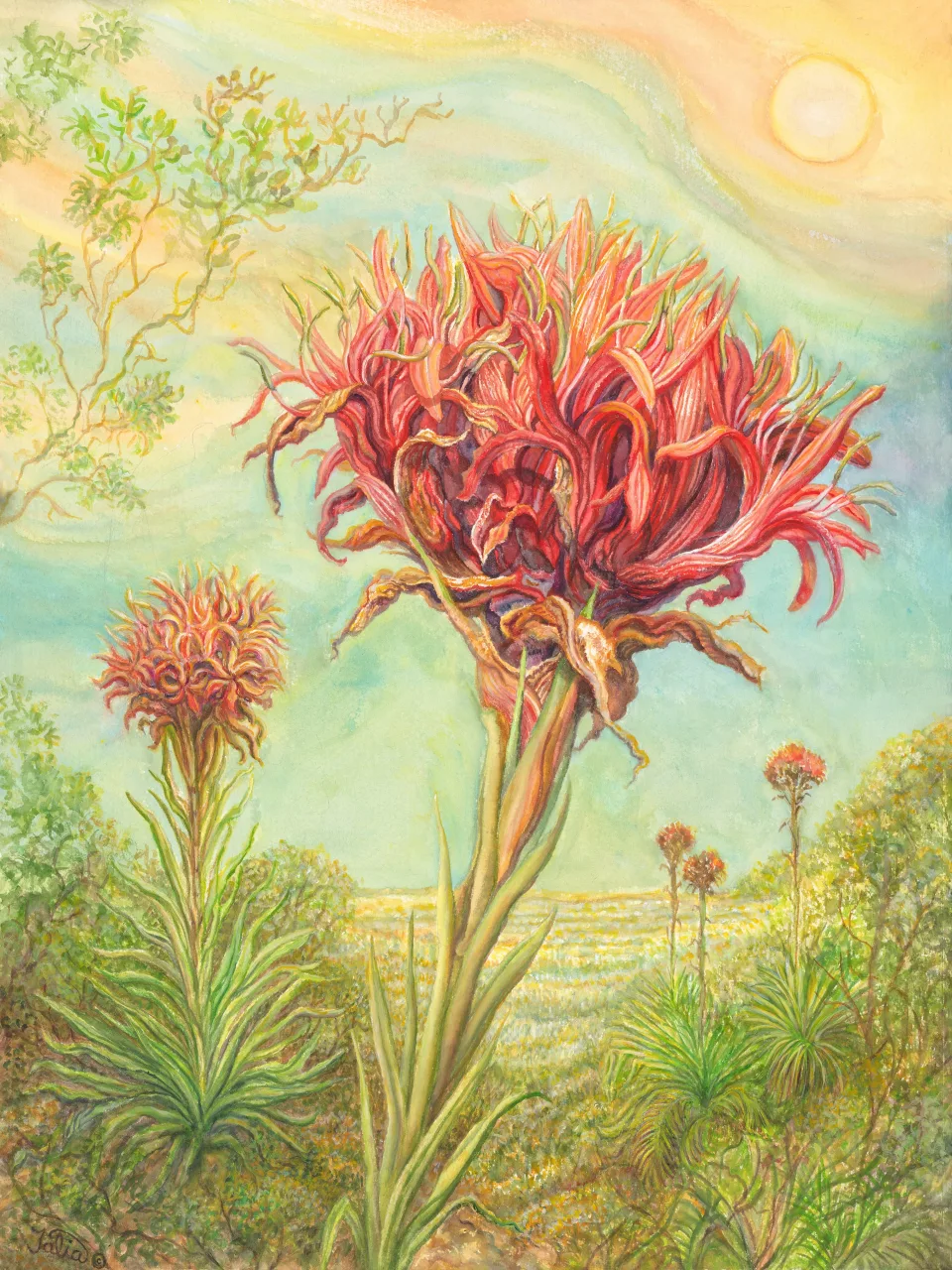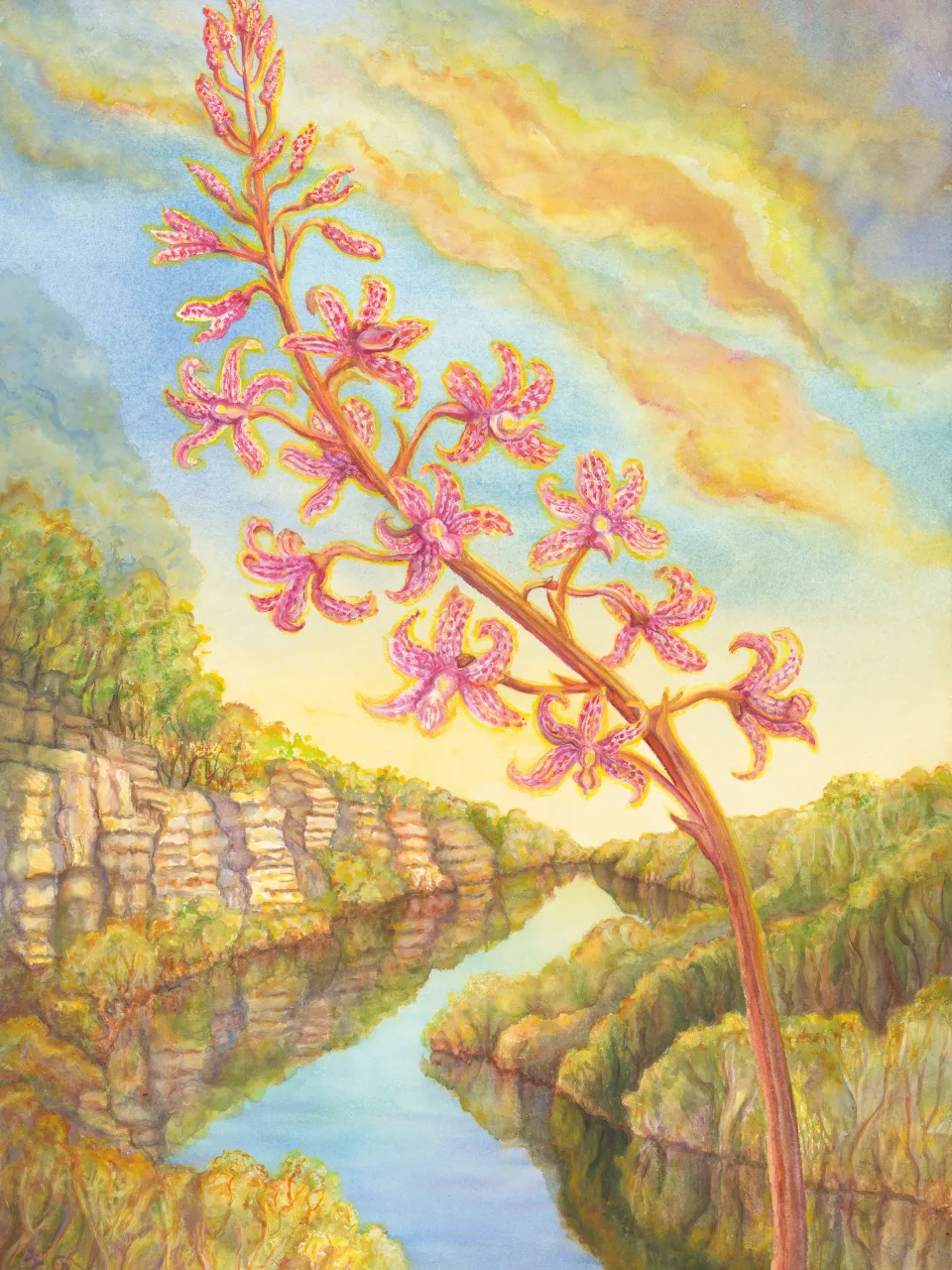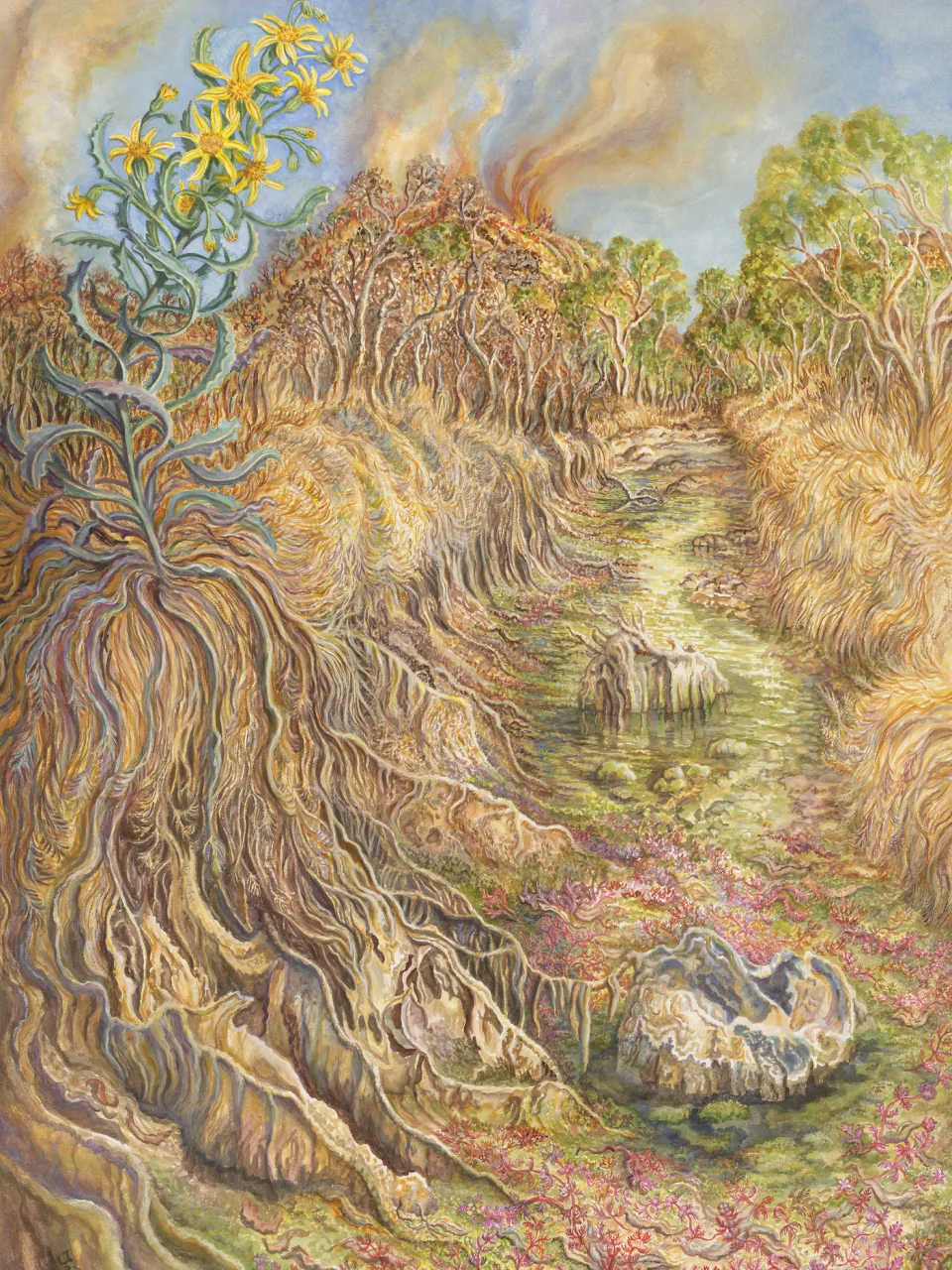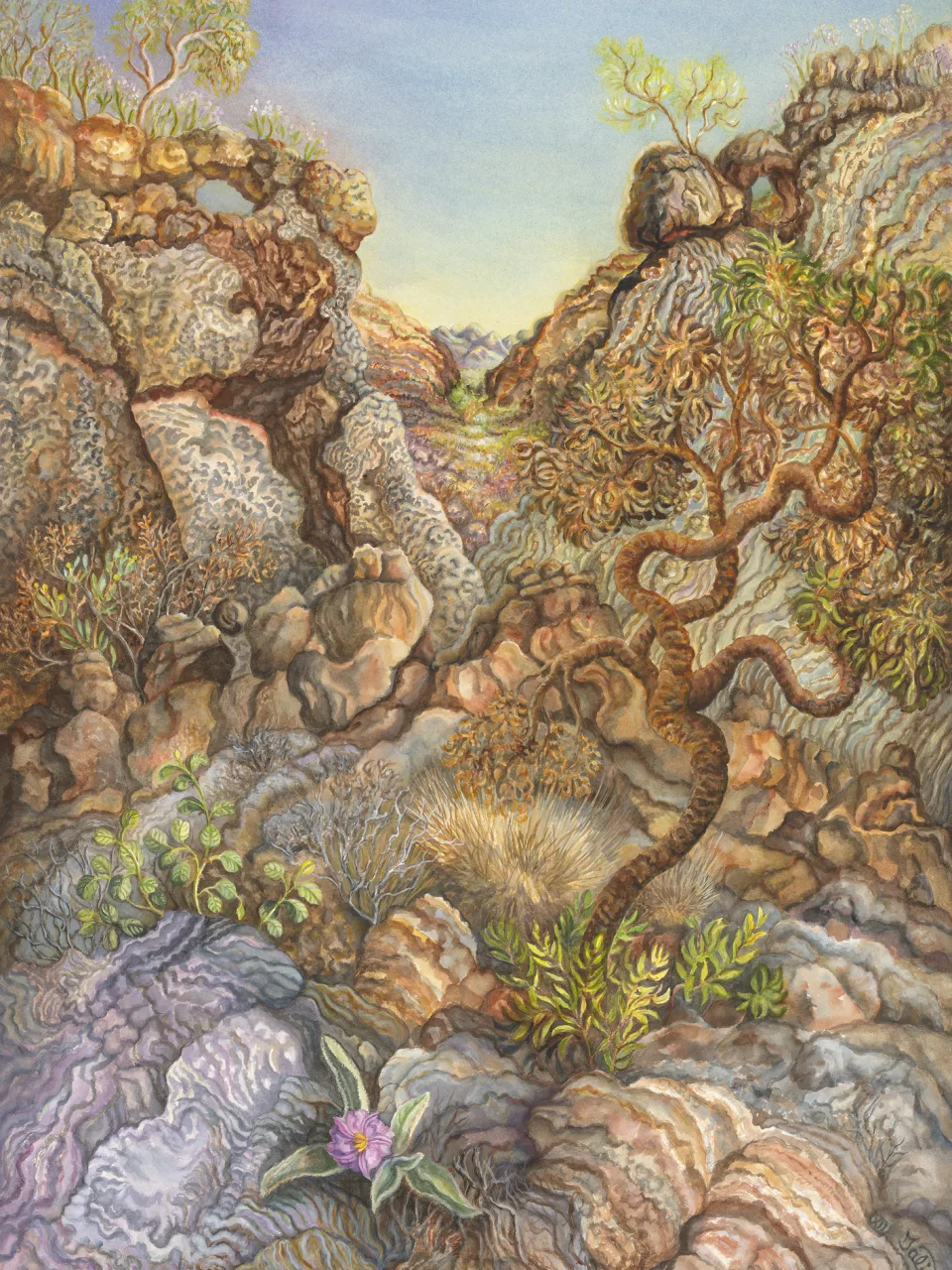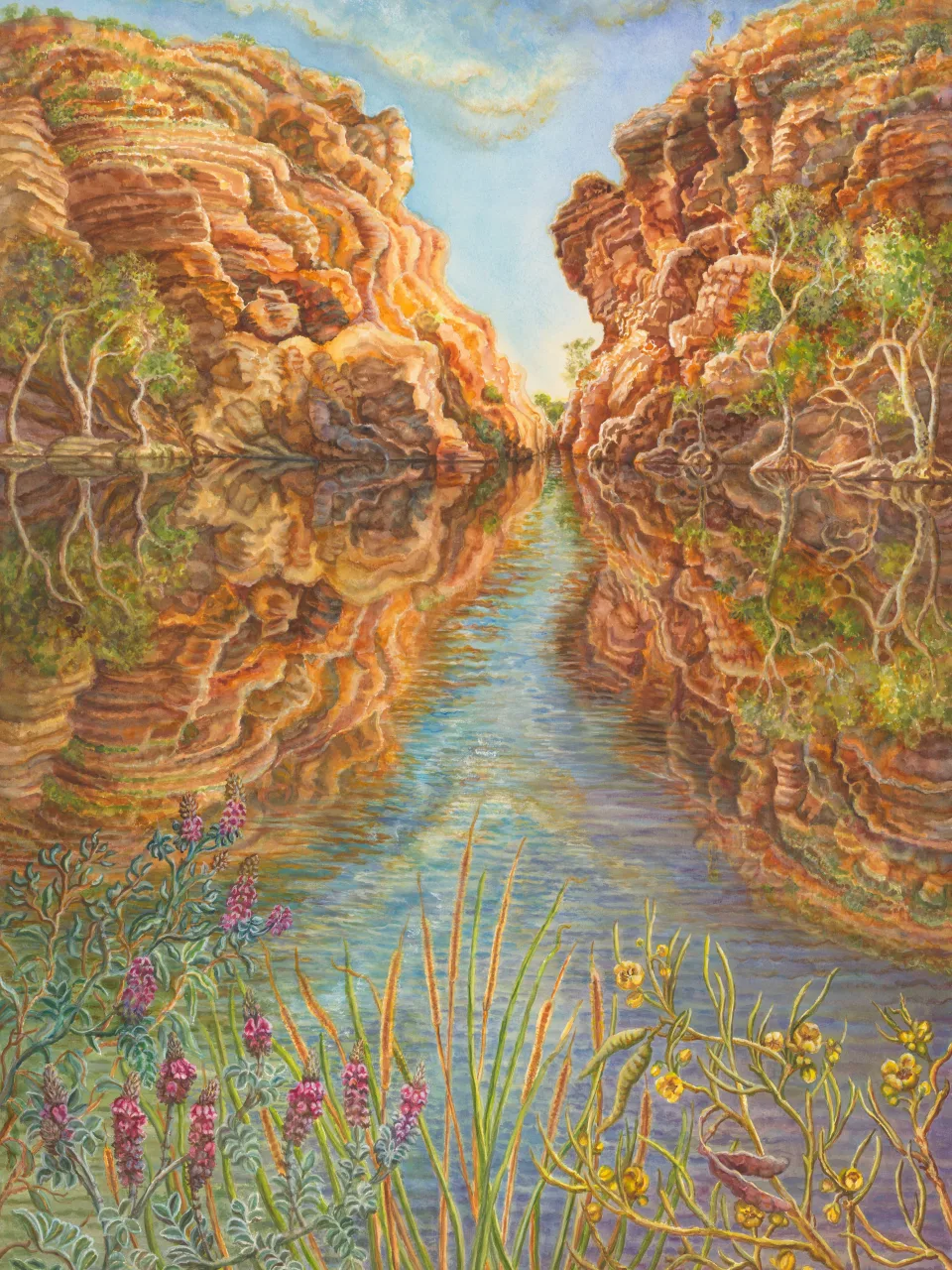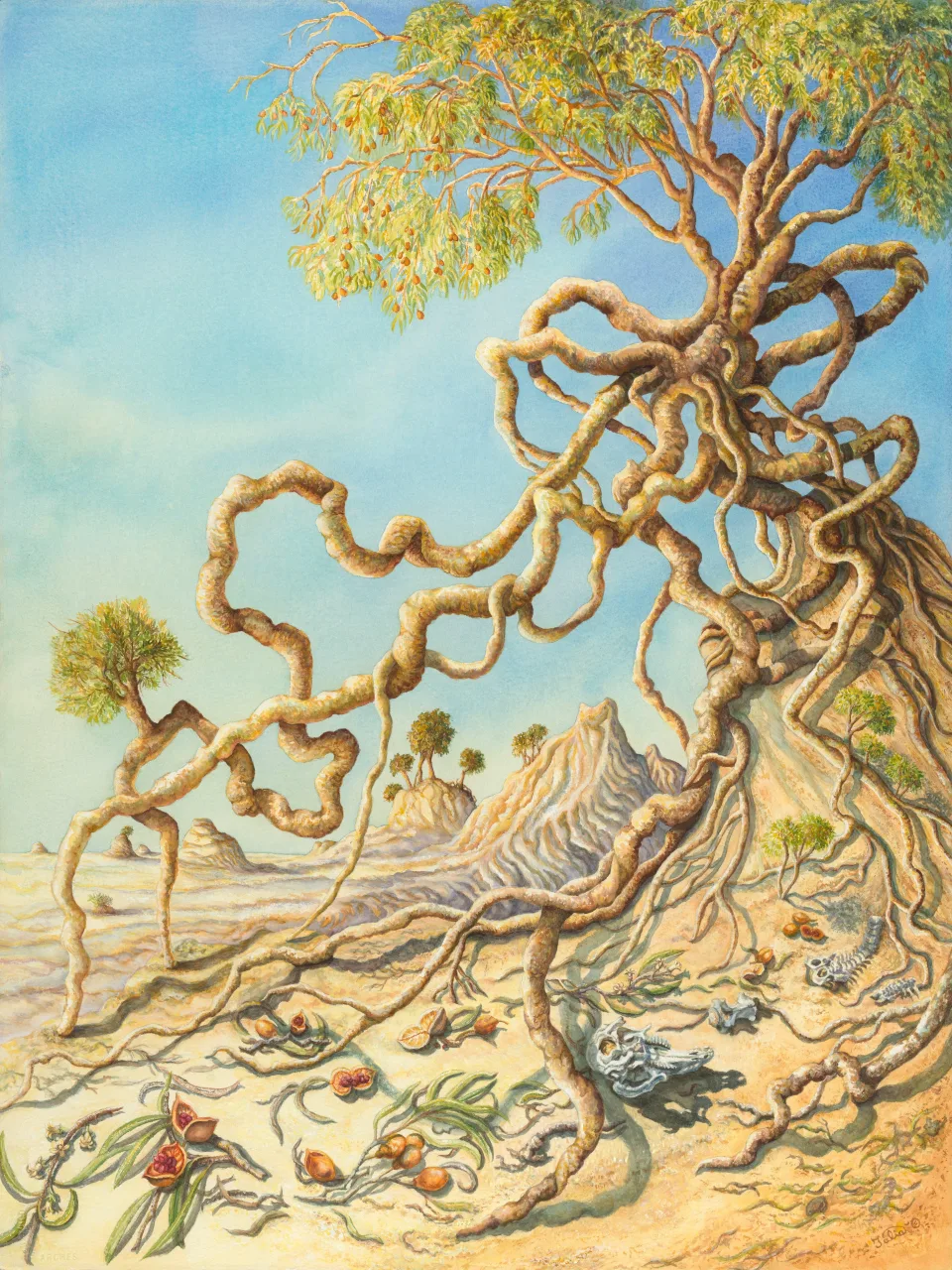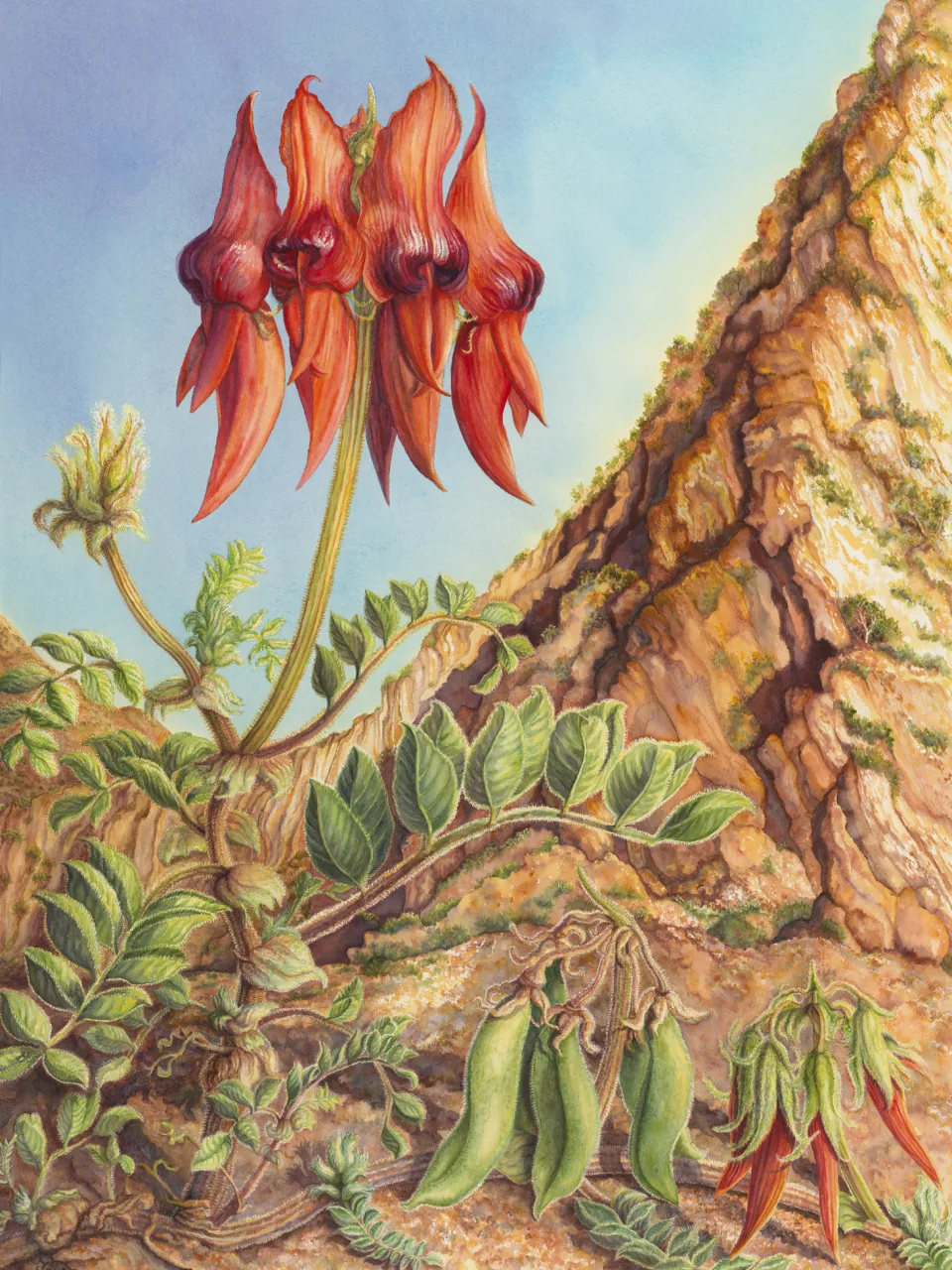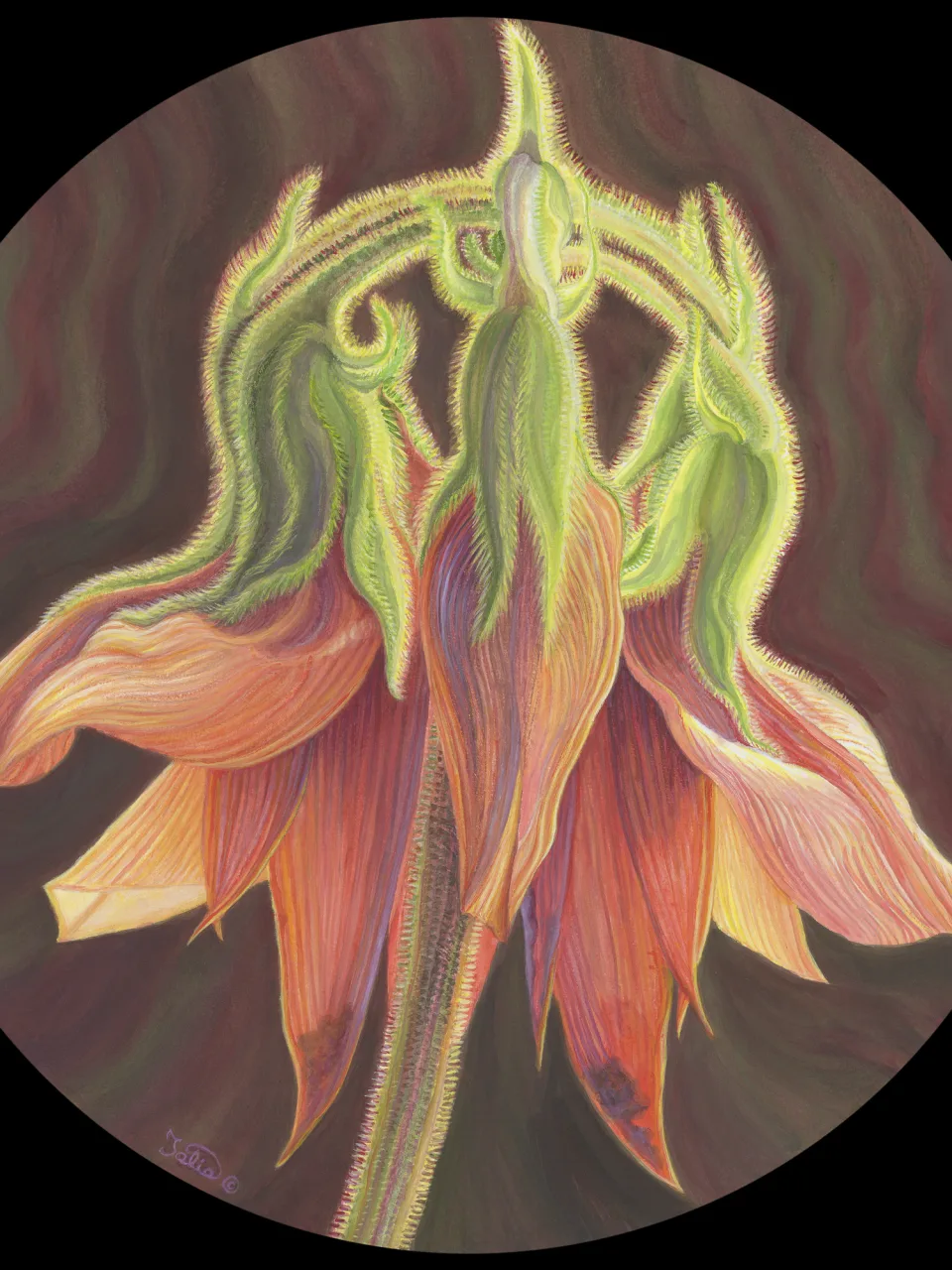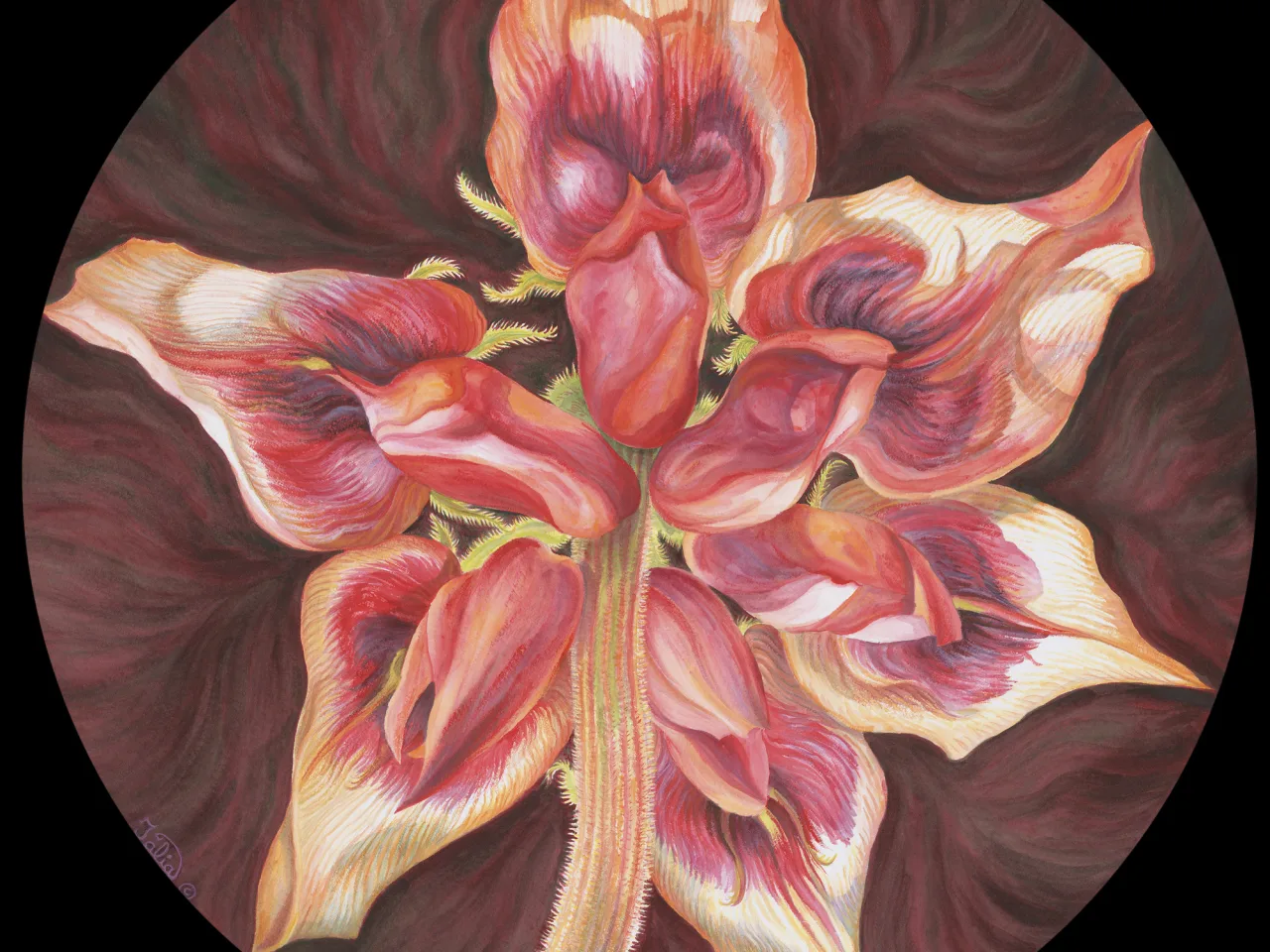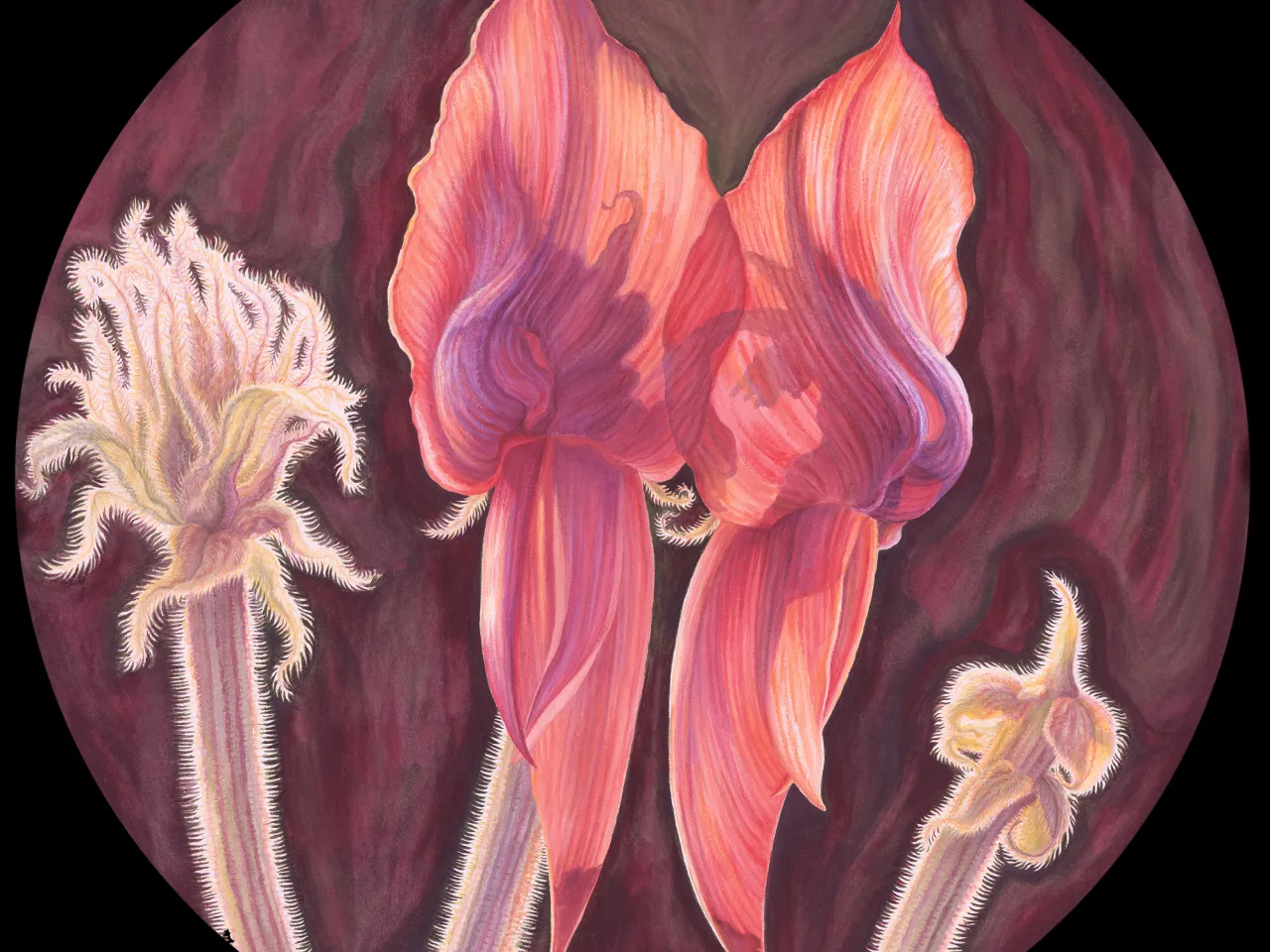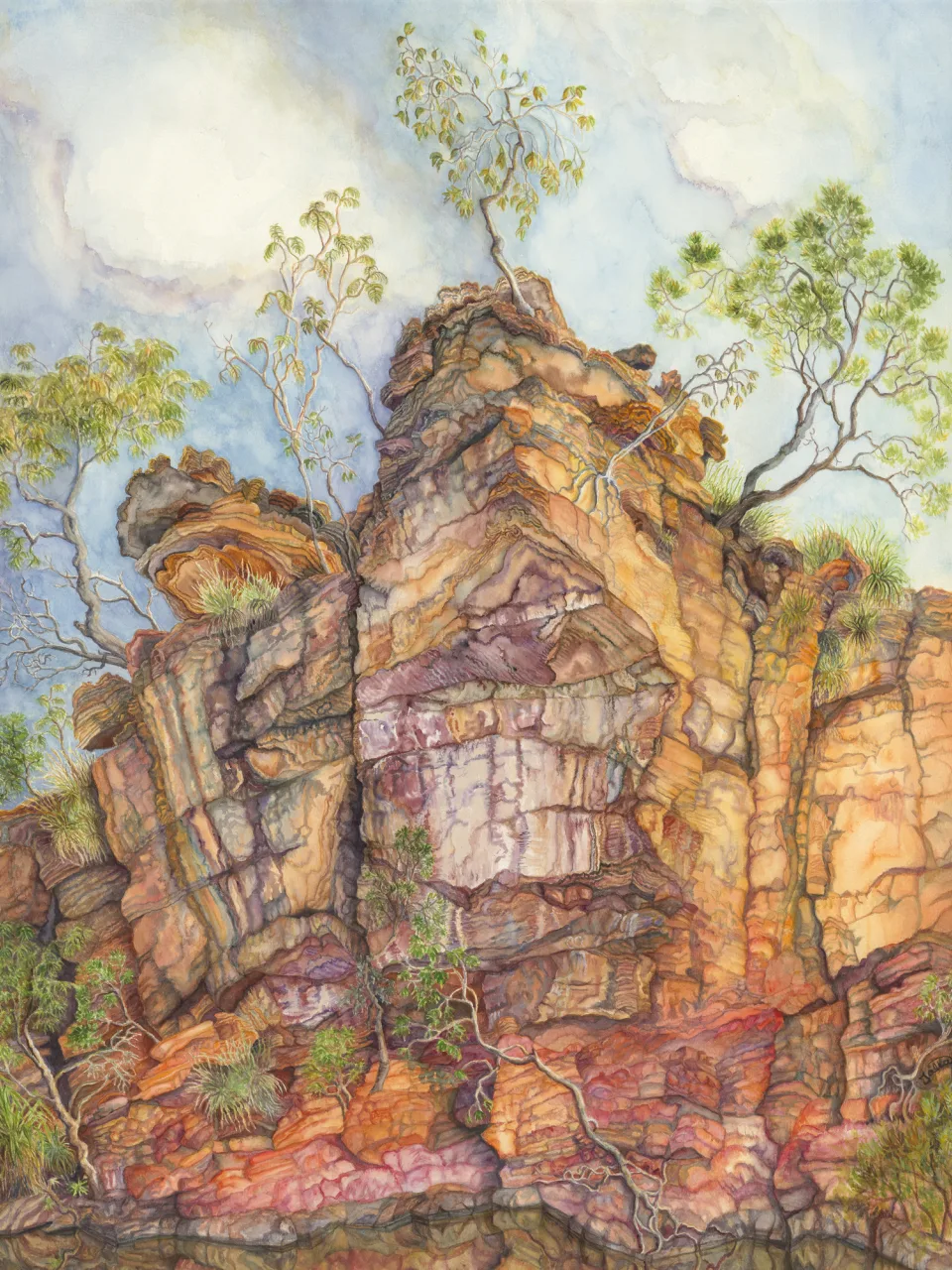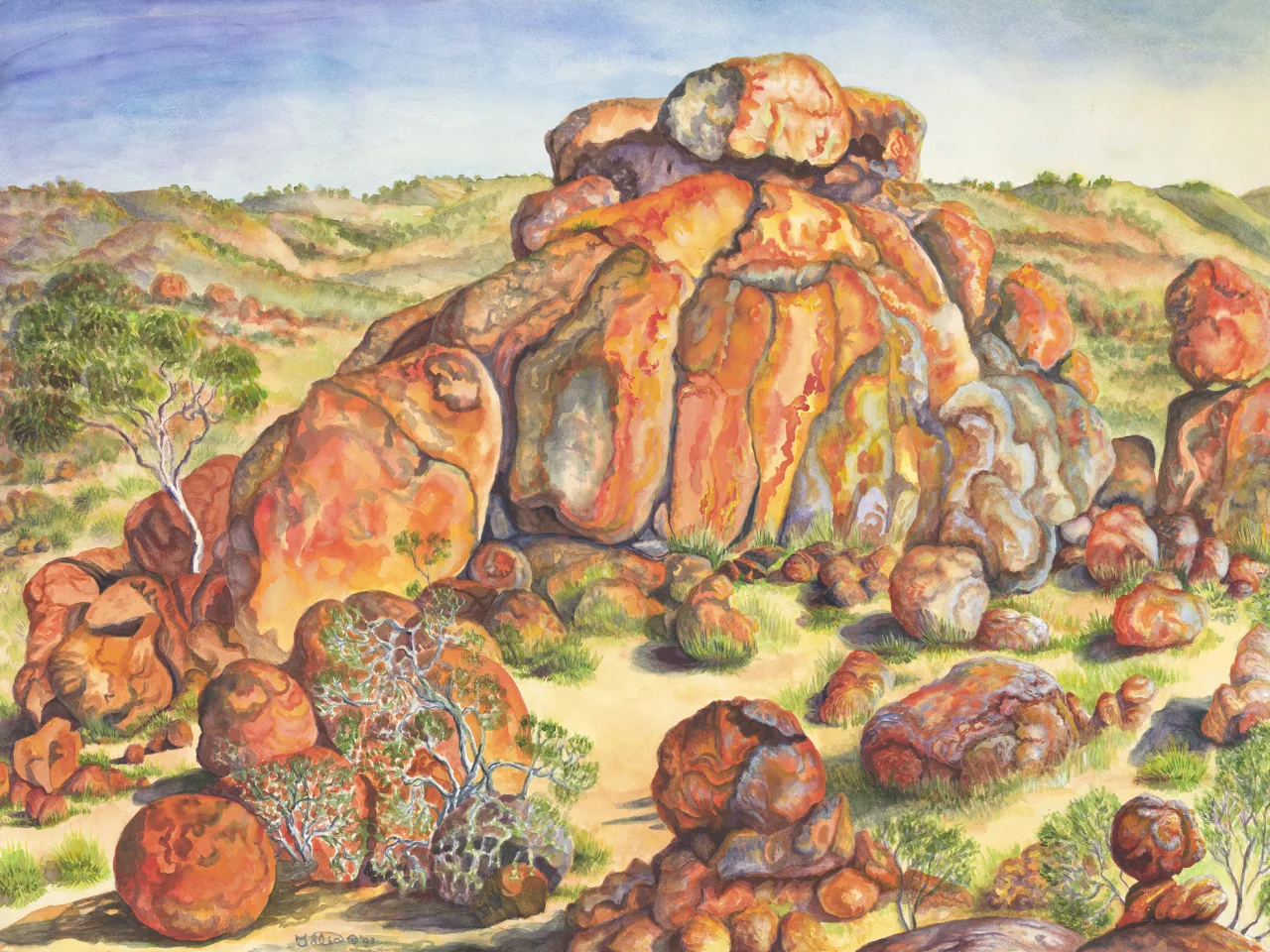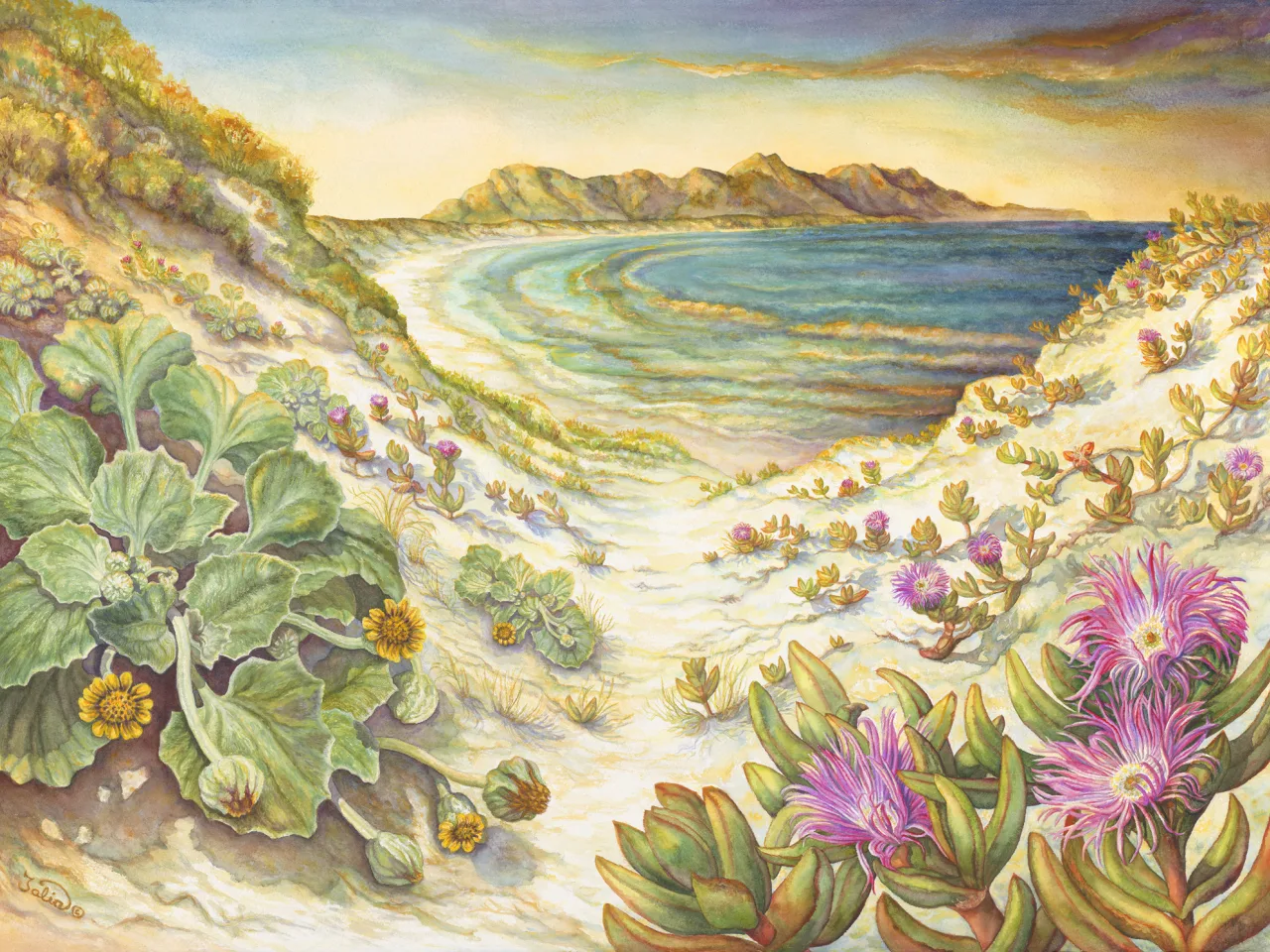Artwork 23A On Top of Bluff Knoll—A Bonsai Garden
Section 18
Mountain refuges
Stirling Range National Park, Western Australia, Western Australia
- 1. Banksia solandri (Stirling Range banksia)
- 2. Calothamnus quadrifidus (one-sided bottlebrush)
- 3. Dampiera linearis (common dampiera)
- 4. Darwinia collina (yellow mountain bell)
- 5. Darwinia squarrosa (pink mountain bell)
- 6. Helichrysum sp. (paper daisy)
- 7. Kunzea montana (mountain kunzea)
- 8. Stylidium sp. (trigger plant)
- 9. Xanthosia rotundifolia (southern cross)
 1
1
from the artist
This work features the amazingly resilient flora we found on the summit of Bluff Knoll, amongst the sandstone and quartzite, and slabs of rock with ripple marks from an ancient shallow sea.
The “bonsai garden” we found there was a source of amazement as much as relief; to finally achieve the summit, and simultaneously discover many varied flowers and windblown stunted flowering shrubs.
Top-right to bottom-left are mountain kunzea (Kunzea montana), their forms reflecting the effect of strong winds, and snow in winter. On the day featured, however, the weather was kind, with low wind conditions, sunshine, and brilliant blue skies.
About halfway along the left diagonal is a “trigger plant” (Stylidium sp.). The trigger plant family (Stylidiaceae) have a very clever pollination strategy. The stigma is positioned between two anthers. The small platform on which pollinators land “triggers” a reflexed column, which descends and sheds pollen onto visitors, while taking up pollen brought by them (Gardner, 1995, pp. 137–139). The best concentration of these plants is in the South-West of W.A., with over 100 endemic species. Their ancestors were amongst the early Gondwanan distribution of the flowering plants.
In the foreground is a lovely pink to red “paper daisy” (Helichrysum sp.).
To lower-right are two species of the unique darwinias (“mountain bells”). These are confined to the Range—and the yellow “bells” (Darwinia collina) in the foreground are usually found only on top of Bluff Knoll.
The lovely blue-flowered Dampiera linearis is endemic to the South-West and part of the Goodeniaceae family. In the eastern states many Goodenia flowers are yellow. They are a distinctive feature of the Australian flora, with about 170 endemic species.
To the right is a member of the ancient Proteaceae family—Banksia solandri (“Stirling Range banksia”), a species unique to the Range. Australia is a centre of endemism for the Proteaceae (Crisp et al., 1999, p. 334).
Also to right are the “one-sided bottlebrush” (Calothamnus quadrifidus), and “southern cross” (Xanthosia rotundifolia). The Calothamnus belongs to a genus with about 24 species, all confined to W.A.. Its foliage is very colourful, with yellow-orange leaf tips complementing the red of the suspended feathery flower clusters. Both plants belong to another very distinctively Australian family, Myrtaceae, the second largest of the Australian families—distributed early in the Cretaceous, and then subjected to millions of years of parallel evolution as Gondwana broke apart.
